

How Many Cruise Ships Have Sunk?
The thought of a cruise ship sinking conjures images of historic maritime tragedies, sparking curiosity and concern among modern travelers.
Despite the advancements in safety and technology, the question lingers in the minds of many: How many cruise ships have actually sunk? In this article, we dive deep into the annals of maritime history and safety records to uncover the truth.
By examining the rare instances of cruise ship sinkings, we’ll provide perspective on the safety of cruising today.
Whether you’re a maritime history enthusiast or planning your next vacation at sea, understanding these incidents sheds light on the impressive safety standards that protect millions of passengers each year.
The Titanic Tragedy (April 1912)
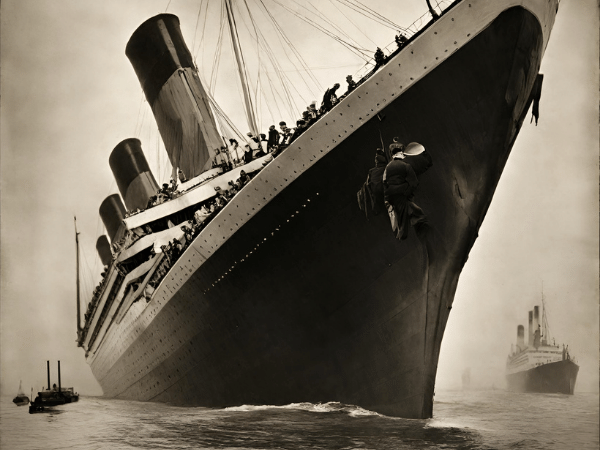
The Titanic’s sinking is one of the most well-known maritime disasters. On its first trip across the Atlantic Ocean, the ship hit an iceberg on the night of April 14, 1912. In just over two and a half hours, the Titanic was completely underwater. Sadly, most passengers couldn’t evacuate safely because there weren’t enough lifeboats for everyone.
The disaster led to more than 1,500 deaths, making it one of the deadliest incidents at sea. The freezing waters made survival even harder for those who couldn’t get on a lifeboat. The Titanic’s sinking is remembered as a tragic event in maritime history.
The Empress of Ireland Tragedy (May 1914)
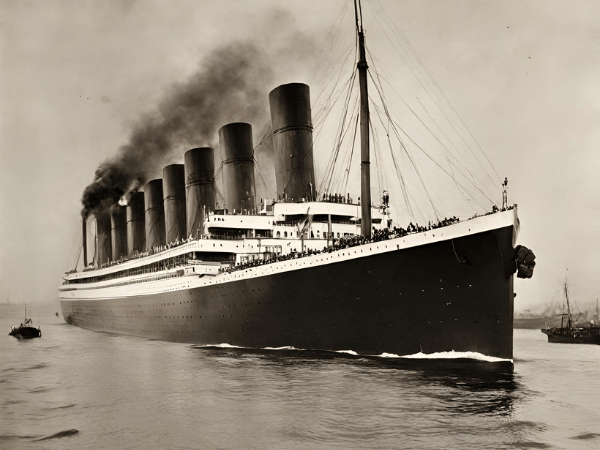
Just two years after the Titanic sank, the Empress of Ireland had its own tragic accident. In May 1914, this ship with nearly 1,500 passengers hit the Norwegian ship Storstad. They could see each other earlier, but then fog made it hard to see.
The crash caused 1,012 passengers and crew to lose their lives. The Empress of Ireland was close to making 1,000 trips without any problems, but this was not one of them. This accident is another sad event in the history of ships at sea.
The Sinking of the Lusitania (May 1915)
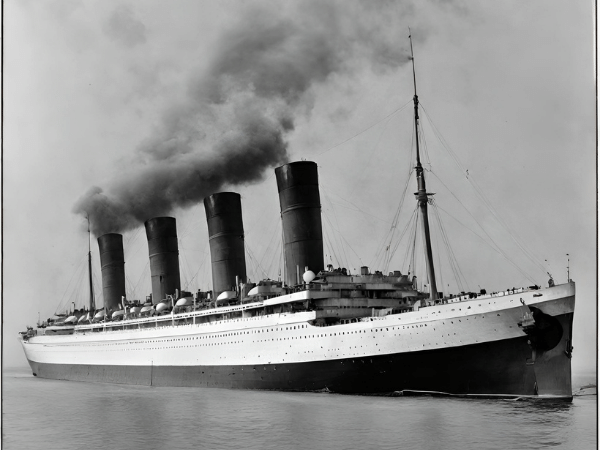
Cunard Line has been operating ships since 1940 and is still active today. One of its famous ships is the Queen Mary 2, the last ocean liner still in service.
The RMS Lusitania, built for Cunard Line, was the world’s largest passenger ship for three months. On May 7, 1915, while sailing off the coast of Ireland to Liverpool, England, a German U-Boat torpedoed the Lusitania. The ship started to sink faster than expected, and only six lifeboats could be launched.
Nearly 1,200 people died in the sinking of the Lusitania. This event is remembered as one of the major maritime tragedies of the early 20th century.
The Britannic’s Fate (November 1916)
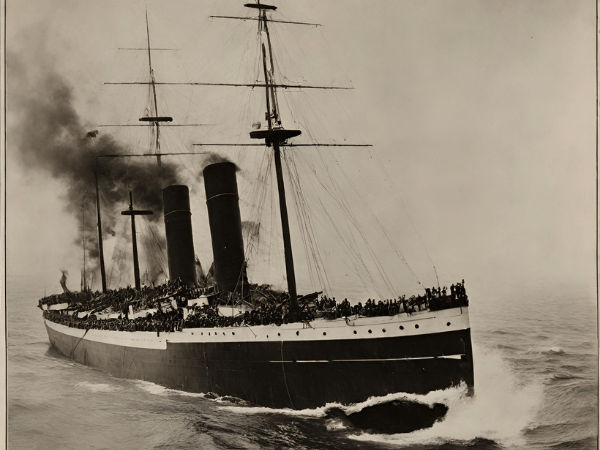
The Britannic was the younger sister of the Olympic (1911) and Titanic (1912). Although intended to be a passenger ship, the outbreak of World War I changed her purpose. She became a hospital ship in December 1915.
In November 1916, less than a year into her service, the Britannic hit a German naval mine in the Kea Channel between the Greek islands of Kea and Makronisos. She sank 55 minutes later.
Fortunately, the casualties were minimal. Most people on board managed to escape on the 35 lifeboats that were launched. However, around 30 people still lost their lives in the sinking of the Britannic.
The Sinking of the Principessa Mafalda (October 1927)
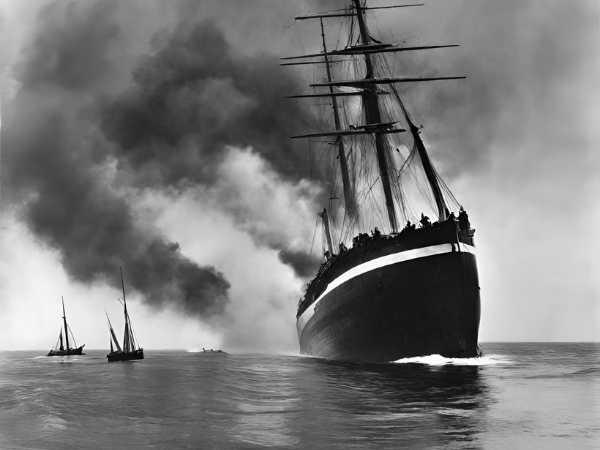
The Principessa Mafalda was an Italian ship named after a princess. It started sailing in 1909 between Genoa, Italy, and Buenos Aires, Argentina.
In October 1927, the ship had a big problem when its propeller shaft broke, damaging the bottom of the ship. It sank off the coast of Brazil, and sadly, more than 300 people died.
The Saint-Philibert Tragedy (June 1931)
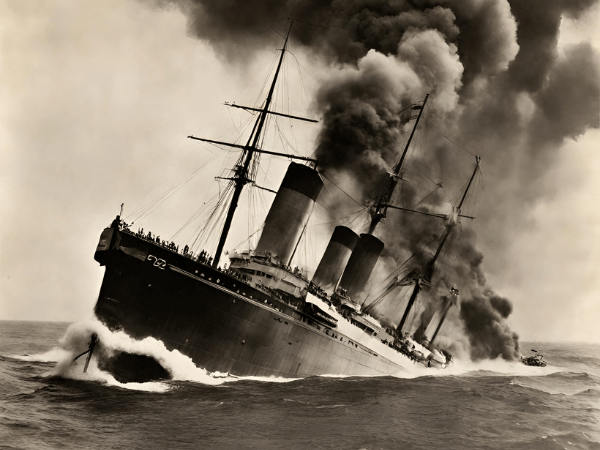
The Saint-Philibert, a small cruise ship, capsized and sank on June 14, 1931, off the coast of France. This tragic event led to the loss of nearly 500 lives, with only 8 passengers surviving.
Before this disaster, the Saint-Philibert was known for offering summer voyages along the French coast.
Check out: What Cruise Can You Go on Alone at 18?
The Sinking of the Georges Philippar (May 1932)
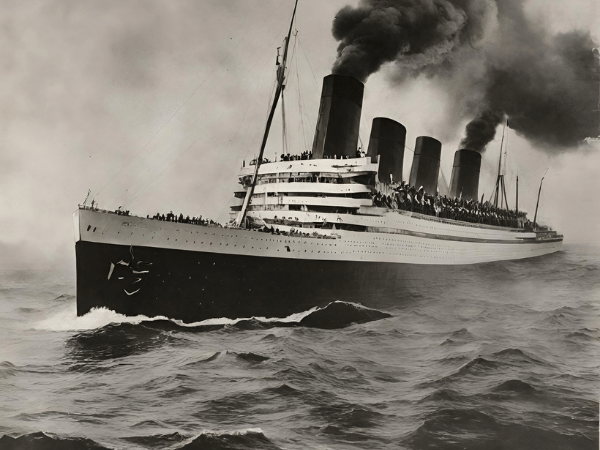
The French ocean liner Georges Philippar sank on the second leg of her maiden voyage near present-day Yemen, resulting in the loss of 54 lives.
The sinking was caused by an electrical fault. A fire started in one of the luxury cabins due to a faulty light switch that sparked and set the wood paneling on fire.
Before setting sail, there were worries about the ship’s safety. The ship’s launch was almost delayed to fix defects. However, these concerns were ignored to avoid penalties for delays.
The Tragedy of the SS Morro Castle (September 1934)
The SS Morro Castle, an American ocean liner operated by Ward Line, was traveling from Havana, Cuba, to New York City when it caught fire and ran aground on September 8, 1934.
The night before the disaster, Captain Robert Rennison Willmott, the ship’s captain, suddenly died after complaining about a stomach ache. Command of the ship was then passed to Chief Officer William Warms.
There were 137 casualties in total. Much of the blame was placed on the crew for not handling the emergency properly. Although the lifeboats could hold up to 408 people, they were launched with only 85.
The Sinking of the Empress of Britain (October 1940)
The Empress of Britain, an ocean liner of over 42,000 gross registered tons, holds the sad record of being the largest ocean liner sunk during World War II, and also the largest ship sunk by a U-Boat during the conflict.
On October 26, she was first bombed from above, then sunk by a torpedo launched by German U-Boats on October 28.
Most of the 416 crew members, 2 gunners, and 205 passengers managed to abandon the ship, leaving few people on board. In total, 45 people lost their lives in this tragic event.
The Collision of Andrea Doria and MS Stockholm (July 1956)
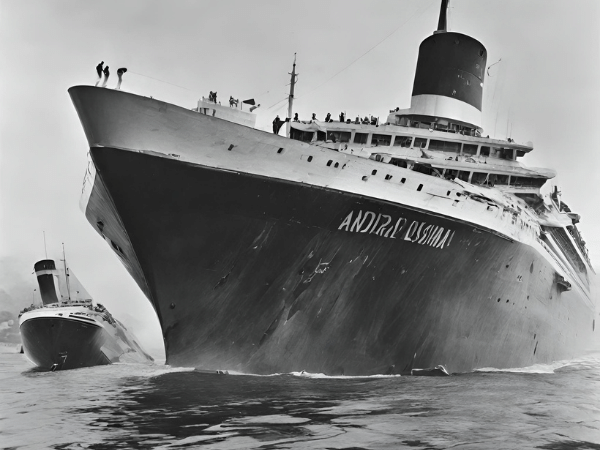
On July 25, 1956, the Andrea Doria and the MS Stockholm collided while on their way to New York City. The accident resulted in 51 deaths. However, this event is also known for one of the largest rescues in maritime history.
Thanks to improved communication systems, the crew of the Andrea Doria was able to quickly start rescue efforts and get help from other ships. Only five people died on board the Stockholm.
The damage to the Andrea Doria was so severe that the ship could not be saved. Those who lost their lives did so because of the initial collision.
The Story of the Bianca C (October 1961)
The Bianca C first sank during World War II when the Germans scuttled her before she was completed. Later, her hull was raised and refitted to become a cruise ship. She was first owned by Panama’s Arosa Line as their flagship but was eventually sold to Costa Line, where she got the name Bianca C after the owner’s daughter.
On October 22, 1961, while docked off the coast of Grenada, an explosion in the ship’s engine room led to fires breaking out. Thankfully, except for one person killed in the initial explosion, everyone was able to evacuate the ship before it sank.
The Journey and End of the Angelina Lauro (September 1979)
The Angelina Lauro didn’t always serve as a cruise ship. She started her journey in 1939 as the MS Oranje. Initially meant to be a passenger ferry, she was kept in Indonesia and turned into a hospital ship. After World War II, she sailed as a passenger liner for around 11 years, making trips around the world from Amsterdam to Australia through the Panama Canal and back via Singapore and the Suez Canal.
In 1964, she was sold to Lauro Lines and refitted as a cruise ship. She embarked on her maiden voyage as the Angelina Lauro on March 6, 1966. In the late 70s, Costa Lines chartered her.
While docked in Saint Thomas, the Angelina Lauro caught fire. The blaze lasted for several days. Before she could be towed to a scrapyard, her weakened hull began to take on water. She finally sank on September 24, 1979.
The Sinking of the MS Mikhail Lermontov (February 1986)
The MS Mikhail Lermontov was an ocean liner operated by the Soviet Union’s Baltic Shipping Company, entering service in 1972. A decade later, it was upgraded to serve as a cruise ship.
On February 6, 1986, the ship left Sydney for a two-week cruise around New Zealand. Ten days into the journey, while sailing past Cape Jackson, it hit rocks. Out of the 743 crew and passengers on board, the majority managed to escape on lifeboats. Tragically, there was one casualty: crew engineer Pavel Zagladimov.
The Tragic Collision of the SS Admiral Nakhimov (August 1986)
The SS Admiral Nakhimov started its journey in 1925 as the SS Berlin, a passenger liner of the German Weimar Republic. It later served as a hospital ship before becoming a Soviet Union passenger ship.
In August 1986, the ship met a tragic end when it collided with another ship in Tsemes Bay. The ship sank quickly, and sadly, 423 people lost their lives in the incident. This marked the third and final time that the ship sank.
The Sinking of MV Jupiter (October 1988)
The MV Jupiter, a Greek cruise ship, started sailing in 1961 as the Moledet. On October 21, 1988, it sank after leaving Piraeus, Greece. An Italian freight ship hit it.
The ship had nearly 400 British students, 84 adults, and 110 crew members on a study cruise. Sadly, one student, one teacher, and two crew members died. About 70 others were injured.
The Sinking of MTS Oceanos (August 1991)
The MTS Oceanos, another Greek ship, sank three years after the MV Jupiter. It was traveling from South Africa to Durban when rough seas hit. A storm made things worse.
The ship’s waste system wasn’t fixed right. A key pipe wasn’t replaced. It’s thought that huge waves broke the pipe, letting seawater flood in.
No one died, but the captain and crew were found guilty of leaving without helping passengers. The ship’s entertainers led all rescue efforts.
The Sinking of MS Estonia (September 1994)
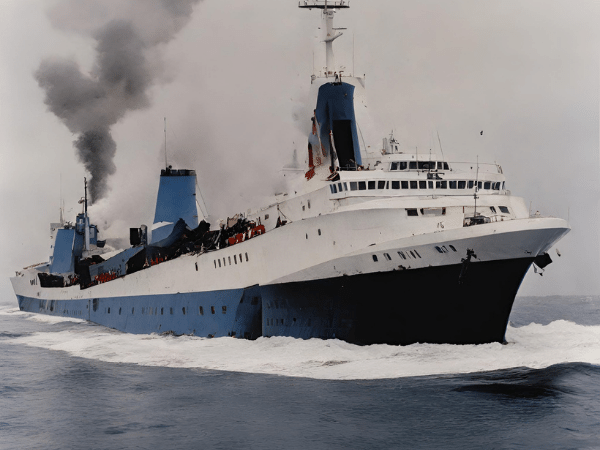
The sinking of the MS Estonia in 1994 was one of the worst maritime disasters of the 20th century. It was the deadliest peacetime sinking of a European ship after the Titanic and the Empress of Ireland. Over 850 lives were lost.
While sailing through rough waters in the Baltic Sea, a metallic bang was heard. Soon after, passengers and crew reported similar sounds. Around 1:15 am, the visor separated, opening the loading ramp and causing the ship to list as water flooded in.
It was difficult for those in cabins to reach the boat deck. Water was entering the ship through the car deck and the windows of public areas and cabins on Deck 6.
The Achille Lauro Incident (December 1994)
The Achille Lauro, originally the ocean liner Willem Ruys, was converted into a cruise ship by Italian businessman Achille Lauro in 1965. It had a series of unfortunate events, including collisions and onboard fires.
In 1985, the ship was hijacked by members of the Palestine Liberation Front. On November 30, 1994, the Achille Lauro caught fire while sailing to South Africa. There were 979 passengers and crew onboard. The majority evacuated the next morning when the ship listed, but two people were killed before it sank on December 2.
The Final Voyage of the Sun Vista (May 1999)
The Sun Vista started its journey in 1963 as the SS Galileo Galilei for the Lloyd Triestino line. Over the years, it sailed for five different cruise lines, including as the first-ever cruise ship for Celebrity Cruises, the Meridian. In 1997, it was transferred to Sun Cruises and renamed the Sun Vista.
On May 20, 1999, a fire broke out in the ship’s engine room. The Sun Vista sank in the early morning hours of May 21 in the Strait of Malacca. Fortunately, all passengers and crew were able to escape safely.
The Sinking of the Britanis (October 2000)

The Britanis began its life as the luxury ocean liner SS Monterey in 1932. It later sailed for Chandris under their “Fantasy Cruises” division starting in February 1971. When Chandris shifted focus to the Celebrity Cruises brand, all Fantasy Cruises operations ceased. In 1998, the ship was sold to AG Belofin and renamed Belofin-1.
Instead of being refurbished, the Britanis was sold to scrappers. While being towed to a scrapyard from Brazil, it developed a leak at the back of the ship. With no one on board, the ship was cut free and capsized off the coast of Cape Town, South Africa.
The Sinking of SeaBreeze (December 2000)
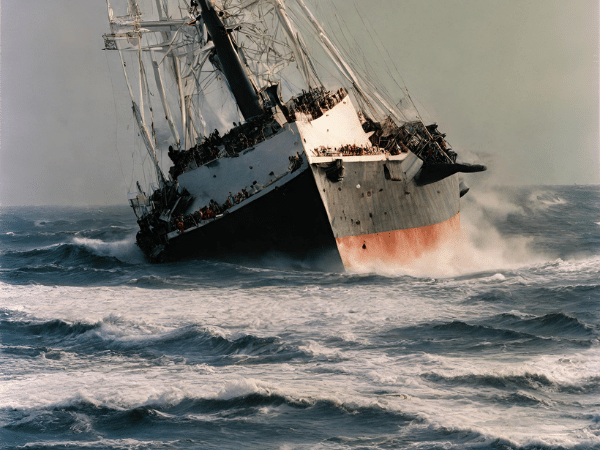
The SeaBreeze, originally named Federico C., was launched in 1958 and sailed for Costa Cruises. In 1983, it was transferred to Premier Cruises and renamed three times.
Premier Cruises went out of business in September 2000, leading to the ship being laid up. While being moved from Halifax, Nova Scotia, to Charleston, South Carolina, by its new owner, Cruise Ventures III, the SeaBreeze sank about 225 nautical miles off the coast of Virginia. All 34 crew members on board were rescued safely.
The ship sank due to the boiler breaking off, causing significant damage to the vessel.
The Sinking of MV Explorer (November 2007)

The MV Explorer, originally the MS Lindblad Explorer, began her career in 1969 as the first ship of her kind to sail through the Antarctic Ocean.
On November 11, 2007, she set sail from Ushuaia, Argentina, for a 19-day cruise. After visiting the Falkland Islands, she hit an iceberg in the Bransfield Strait on November 23, causing a gash in the hull that let water in.
All 91 passengers, 53 crew, and 9 guides were able to escape on lifeboats. They stayed there for five hours until the MS Nordnorge rescued them.
The Sinking of MS Sea Diamond (April 2007)
The MS Sea Diamond, originally known as Birka Princess, operated for Birka Line for most of her time at sea. In 2006, she was sold to Louis Cruises Line and renamed. A year later, she ran aground on a reef near Santorini, with 77 students from Paisley Magnet School in North Carolina on board.
Initially, it was believed that all passengers and crew were safe. However, two French citizens, Jean Christophe Allain, 45, and his daughter Maud, 16, were reported missing and never found.
Greek authorities later announced plans to charge the captain and five other officers with negligence.
The Capsizing of Costa Concordia (January 2012)
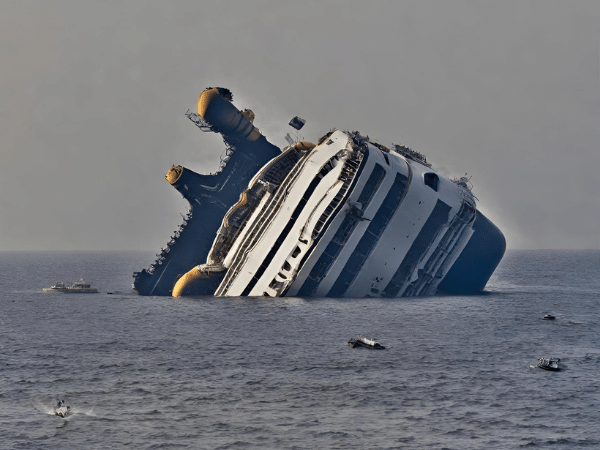
The Costa Concordia was the first ship of Costa Cruises’ Concordia Class, entering service in 2006. On January 13, 2012, she set sail on a 7-night Mediterranean cruise with 3,206 passengers and 1,023 crew members.
Captain Francesco Schettino veered off course, sailing too close to the island of Giglio. The ship struck a large rock, causing a 174-foot gash in the hull, leading to flooding and loss of power. The ship’s rudder position made it unsteerable, and it began tilting toward the starboard side.
The evacuation took over six hours and resulted in 32 deaths. An investigation focused on the crew’s actions, particularly Captain Schettino’s, as he left the ship while passengers were still on board.
Leave a Comment Cancel reply
Save my name, email, and website in this browser for the next time I comment.
- Dominican Republic
- Riviera Maya
- New York City
- All Destinations >
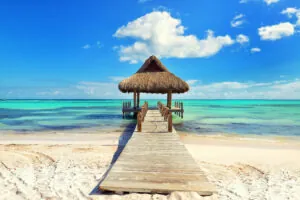
- All-Inclusive
- Kid-Friendly
- All Collections >
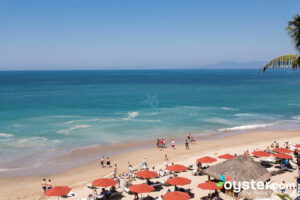
- What's New
- Rookie Mistakes
- Luxury for Less
- Destination Cheat Sheets
- Travel Safety
- Travel Tips
- Hidden Gems
- Steamy Travel
- Health and Wellness Travel
- All Stories >
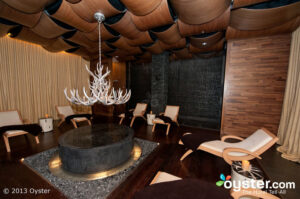
- Adults Only Travel
By proceeding, you agree to our Privacy Policy and Terms of Use .
The 9 Worst Cruise Ship Disasters

The Titanic may be the most famous ship disaster, but surprisingly, it’s not even close to being the deadliest wreck that ever occurred on a luxury liner. If you’re trying to dissuade someone from taking a cruise, you should show them this list of maritime misadventures presented in no particular order. Disclaimer: The vast majority of cruises sail without incident and are safe and not filled with poop. (Oh yeah, we’ll get there.) Get your plate ready for a buffet of high-seas horror.
1. RMS Titanic

F.G.O. Stuart (1843-1923) {{PD-old}} /Wikimedia Commons
The many experts in 1912 who considered the Titanic “unsinkable” were to be proven wrong on the boat’s maiden voyage from Southampton to New York City. Thomas Andrews had designed the ship to withstand head-on collisions and rammings from other ships. However, the North Atlantic Ocean iceberg that took down the vessel scraped through five of its 16 watertight compartments. The boat would have reportedly remained afloat if it had only gone through four. Like other systems at the time, the Titanic's lifeboats were designed to shepherd passengers to nearby rescue ships, not take them to shore. Unfortunately, help was many hours away in the wee hours of April 15 when the boat was going under. The poor crew organization also caused many lifeboats to leave the ship at far less than full capacity. Plus, they only had enough boats for about a third of the onboard. As a result, more than 1,500 people died — either on the ship or in the icy waters, waiting for help. A recent theory suggests a fire that started in the hull before the ship set sail weakened the vessel’s steel walls, making it susceptible to an iceberg that normally wouldn’t have caused as much damage.
2. Eastern Star’s Dongfang zhi Xing
In 2015, Dongfang zhi Xing was traveling on the Yangtze River in China when a thunderstorm struck, and the boat capsized. Ships in the area were warned that bad storms were coming and told to take precautions, but it is unclear if the Dongfang zhi Xing ever received the warnings and continued to sail. The ship was met with winds of up to 72-85 mph, and ultimately, a downburst (a strong downward wind) caused the ship to capsize and sink. Out of the 454 people on board, only 12 survived, making the total number of dead 442.
3. Carnival Cruise Line’s Triumph

DVIDSHUB/Flickr
A generator fire on Carnival Cruise Lines’s Triumph (now called Carnival Sunrise) left the ship powerless, and a late-night comedy punchline was born: “The Poop Cruise.” Without working bathrooms, passengers were forced to drop their payloads into red “hazardous waste” bags and stuff them into garbage cans left in the hall. Passengers described carpets soaked with more than two inches of raw sewage. News reports described the scene as a “shanty town” and a “new circle of hell.” One passenger reportedly called her husband and told him that their 12-year-old daughter had Skittles for breakfast. It took four days for the Triumph to be towed from the Gulf of Mexico to Mobile, Alabama, where it was possible to smell the ship from the dock. Later, 31 passengers claimed long-lasting damage, including PTSD, and sued. After the verdict, 27 of them split $118,000, many earning less than $3,000 (minus legal fees) for their troubles.
4. Costa Concordia

European Commission DG ECHO/Flickr
One of the biggest passenger ships ever wrecked, the Costa Concordia had 17 decks, six restaurants, a three-story theater, and enough room for 4,200 vacationers. On January 13, 2012, Captain Francesco Schettino agreed to a request by the ship’s chief maître d’, Antonello Tievoli, and sailed closer to Isola del Giglio than normal. Why? Tievoli, a native of Giglio, wanted to impress and “salute” local residents. Unfortunately, Captain Schettino turned off the ship’s alarm for the computer navigation system and later admitted he thought he knew the waters well enough to navigate by sight. However, the ship’s first mate testified that the captain had left his glasses in his cabin and requested them. The Costa Concordia struck an underwater rock, capsized, and sank, killing 32 passengers. Schettino’s worst maritime sin? He abandoned the ship with 300 passengers still onboard. A Coast Guard officer in contact with the ship at the time of the sinking claimed he told Schettino to get back onboard. After being convicted of manslaughter and pursuing several appeals, Schettino only started his 16-year prison sentence in May of 2017. The salvage effort (the ship was completely dismantled) was the largest effort of its kind.
5. SS Eastland
Launched in 1903, the SS Eastland was a passenger ship based in Chicago and used for tours. Although the ship had noted listing (tilting) since its inception and some measures had been taken to rectify this, the SS Eastland was still suffering from being top-heavy when boarding for a cruise in 1915. The ship was meant to sail from Chicago to Michigan City, Indiana, carrying workers from Western Electric Company’s Hawthorne Works for a picnic. On July 24, 2,572 passengers boarded, with many congregating on the open upper decks. While still docked, the ship began to list to the port side, and reportedly, at some point, more passengers rushed to the port side, causing the ship to roll onto its side completely. Despite the river’s bottom being just 20 feet below and the shore being about the same distance, a total of 844 passengers and crew members died, including 22 entire families.
6. Royal Pacific
When the Royal Pacific was first launched as a passenger ferry in 1964, it could carry 250 passengers, 91 cars, and 16 trucks. Sold and converted into a cruise ship in the late 1980s, the boat’s maiden voyage was a two-night “cruise to nowhere” from Singapore and sailed by Phuket, Malacca, and Penang before returning home. At around 2 a.m., when most passengers were asleep, the crew heard a loud bang, and the plates on the buffet table crashed to the ground. A Taiwanese trawler, Terfu 51, had accidentally rammed the ship, leaving a six-foot gash in the side. As the trawler pulled away, there was a deafening sound of metal scraping against metal. The PA system wasn’t working properly on the boat, but the safety officer ran downstairs to survey the damage. When he returned, he told everyone to put on their life jackets. Reports vary about how many passengers were impacted — most tallies number 30 dead and 70 injured. Several passengers also complained that a mix of Greek-, English- and Mandarin-speaking crew members led to few people understanding what anyone was saying.
7. SS Morro Castle
The story of the SS Morro Castle is so dreadful it’s surprising no Hollywood producer has turned the tale into a horror movie. Director Fritz Lang collaborated on a script about the tragedy, and named it “Hell Afloat” (which is a pretty apt description), but it was never made. Between 1930 and 1934, the SS Morro Castle regularly shuttled 480-plus passengers between Havana and New York. While onboard, there was no Depression to worry about and no Prohibition, which meant plenty of booze-filled partying. However, the September 1934 return sail from Cuba to the Big Apple seemed cursed. On September 7, Captain Robert Wilmott complained of stomach trouble after eating dinner and retired to his cabin, where he later died of an apparent heart attack. Chief Officer William Warms took command, and a few hours later, around 3 a.m. on September 8, a fire started in one of the storage lockers. The crew’s attempts to fight the fire were haphazard and inadequate, and soon, the blaze couldn’t be contained. Many crew members abandoned the ship, leaving confused passengers to fend for themselves in the dark, smoky hallways. Some jumped from the deck to their death in the water. Rescuers lined up on the Jersey Shore to meet the lifeboats carrying passengers. The next morning, the burning, black hull of the SS Morro Castle ran aground at Asbury Park, New Jersey. Of the 549 people aboard the cruise, 86 guests and 49 crew members died.
8. Royal Caribbean’s Explorer of the Seas
A cruise can be an oasis of calm in rough waters, but it’s also a petri dish of disease where viruses ricochet from passenger to passenger. In 2014, the Royal Caribbean’s Explorer of the Seas cruise from New Jersey to the Caribbean earned the dubious honor of being the ship with more sick passengers than any other boat trip since the Centers for Disease Control and Prevention started keeping statistics more than 20 years ago. An estimated 700 passengers and crew members were sick at some point. Most cruise ship illnesses result from norovirus, that causes inflammation of the stomach and large intestines and regular trips to the “head.” If you’re wondering how to stay healthy on a cruise with sick passengers, plenty of handwashing (and avoiding ill people) is key. Bugs pass quickly through contact with ship railings, bathroom doors, and buffet food.
9. MTS Oceanos
Built by a French company and first launched in 1952, the MTS Oceanos was purchased by a Greek company in 1976. On August 3, 1991, Oceanos set sail for East London, South Africa, and headed north for Durban, led by Captain Yiannis Avranas. The ship reportedly headed into 40-knot winds and 30-foot swells, and thus, the typical sail-away outdoor deck party with British entertainers Moss and Tracy Hills was moved to an indoor lounge. The sea conditions worsened that night, leading to the ship rolling from side to side, and eventually, an explosion was heard due to a lack of repairs for the waste disposal system. This all led to the ship losing power and water filling its generator room, so the generators were shut down and the ship was led adrift. A distress call was sent and answered by numerous South African helicopters and a Dutch container ship. Shockingly, the captain and many crew members were among the first to be airlifted to shore, leaving the entertainment staff to coordinate the rescue efforts and help passengers to safety. All 571 passengers and crew members were saved by the time the ship sank nose-first into the sea.
'We all suffer from PTSD': 10 years after the Costa Concordia cruise disaster, memories remain
GIGLIO, Italy — Ten years have passed since the Costa Concordia cruise ship slammed into a reef and capsized off the Tuscan island of Giglio. But for the passengers on board and the residents who welcomed them ashore, the memories of that harrowing, freezing night remain vividly etched into their minds.
The dinner plates that flew off the tables when the rocks first gashed the hull. The blackout after the ship's engine room flooded and its generators failed. The final mad scramble to evacuate the listing liner and then the extraordinary generosity of Giglio islanders who offered shoes, sweatshirts and shelter until the sun rose and passengers were ferried to the mainland.
Italy on Thursday is marking the 10th anniversary of the Concordia disaster with a daylong commemoration that will end with a candlelit vigil near the moment the ship hit the reef: 9:45 p.m. on Jan. 13, 2012. The events will honor the 32 people who died that night, the 4,200 survivors, but also the residents of Giglio, who took in passengers and crew and then lived with the Concordia's wrecked carcass off their shore for another two years until it was righted and hauled away for scrap.
► CDC travel guidance: CDC warns 'avoid cruise travel' after more than 5,000 COVID cases in two weeks amid omicron
“For us islanders, when we remember some event, we always refer to whether it was before or after the Concordia,” said Matteo Coppa, who was 23 and fishing on the jetty when the darkened Concordia listed toward shore and then collapsed onto its side in the water.
“I imagine it like a nail stuck to the wall that marks that date, as a before and after,” he said, recounting how he joined the rescue effort that night, helping pull ashore the dazed, injured and freezing passengers from lifeboats.
The sad anniversary comes as the cruise industry, shut down in much of the world for months because of the coronavirus pandemic, is once again in the spotlight because of COVID-19 outbreaks that threaten passenger safety. The U.S. Centers for Disease Control last month warned people across-the-board not to go on cruises, regardless of their vaccination status, because of the risks of infection.
► 'We found out while we were flying': Last-minute cruise cancellations leave travelers scrambling
► 'The Disney magic is gone' ... or is it?: Longtime fans weigh in on changes at Disney World
'We all suffer from PTSD'
For Concordia survivor Georgia Ananias, the COVID-19 infections are just the latest evidence that passenger safety still isn’t a top priority for the cruise ship industry. Passengers aboard the Concordia were largely left on their own to find life jackets and a functioning lifeboat after the captain steered the ship close too shore in a stunt. He then delayed an evacuation order until it was too late, with lifeboats unable to lower because the ship was listing too heavily.
“I always said this will not define me, but you have no choice," Ananias said in an interview from her home in Los Angeles, Calif. “We all suffer from PTSD. We had a lot of guilt that we survived and 32 other people died.”
Prosecutors blamed the delayed evacuation order and conflicting instructions given by crew for the chaos that ensued as passengers scrambled to get off the ship. The captain, Francesco Schettino, is serving a 16-year prison sentence for manslaughter, causing a shipwreck and abandoning a ship before all the passengers and crew had evacuated.
Ananias and her family declined Costa’s initial $14,500 compensation offered to each passenger and sued Costa, a unit of U.S.-based Carnival Corp., to try to cover the cost of their medical bills and therapy for the post-traumatic stress they have suffered. But after eight years in the U.S. and then Italian court system, they lost their case.
“I think people need to be aware that when you go on a cruise, that if there is a problem, you will not have the justice that you may be used to in the country in which you are living,” said Ananias, who went onto become a top official in the International Cruise Victims association, an advocacy group that lobbies to improve safety aboard ships and increase transparency and accountability in the industry.
Costa didn’t respond to emails seeking comment on the anniversary.
► Royal Caribbean cancels sailings: Pushes back restart on several ships over COVID
'We did something incredible'
Cruise Lines International Association, the world’s largest cruise industry trade association, stressed in a statement to The Associated Press that passenger and crew safety was the industry's top priority, and that cruising remains one of the safest vacation experiences available.
“Our thoughts continue to be with the victims of the Concordia tragedy and their families on this sad anniversary," CLIA said. It said it has worked over the past 10 years with the International Maritime Organization and the maritime industry to “drive a safety culture that is based on continuous improvement."
For Giglio Mayor Sergio Ortelli, the memories of that night run the gamut: the horror of seeing the capsized ship, the scramble to coordinate rescue services on shore, the recovery of the first bodies and then the pride that islanders rose to the occasion to tend to the survivors.
► Cruising during COVID-19: Cancellation, refund policies vary by cruise line
Ortelli was later on hand when, in September 2013, the 115,000-ton, 1,000-foot long cruise ship was righted vertical off its seabed graveyard in an extraordinary feat of engineering. But the night of the disaster, a Friday the 13th, remains seared in his memory.
“It was a night that, in addition to being a tragedy, had a beautiful side because the response of the people was a spontaneous gesture that was appreciated around the world,” Ortelli said.
It seemed the natural thing to do at the time. “But then we realized that on that night, in just a few hours, we did something incredible.”
The 8 Worst Cruise Ship Disasters
Somali pirates, icebergs, and coral reefs have ruined many would-be vacations.

Gregorio Borgia | AP

Carnival Triumph: What was supposed to be a four-day jaunt to the Caribbean became an eight-day nightmare when an engine fire left the ship floating in the Gulf of Mexico without power, air-conditioning, or a working septic system.
[ RELATED: Cruise From Hell Set to Limp Ashore Tonight ]

Carnival Splendor: Carnival's Splendor suffered a similar fate as Carnival's Triumph in November 2011. Both were stranded by engine fires, though the Splendor was left floating in the Pacific Ocean. After three days the Splendor and its 4,500 passengers were towed back to the San Diego Bay.

Costa Concordia: This Italian cruise ship ran aground on a reef off the coast of Tuscany, Italy, in January 2012 and toppled onto its side. Of the 4,200 aboard, 32 died and 64 were injured, according to the Associated Press . The half-submerged ship is still being removed.
[ PHOTOS: Costa Concordia Disaster: One Year Later ]

Seabourn Spirits: In 2005, while 100 miles off the coast of Somalia, pirates in speedboats attacked the small cruise ship. The pirates fired on it with machine guns and rocket-propelled grenades before the captain changed course and got away. None of the ship's 300 passengers were hurt, and the ship made it to the Seychelles where the rocket damage was repaired.

Celebrity Mercury: More than 400 of the 2,600 passengers and crew onboard the Mercury were stricken ill in 2010 in what the Centers for Disease control deemed a norovirus outbreak . The virus caused widespread vomiting and other gastrointestinal ills on the ship, which left from Charleston, S.C.

Norwegian Dawn: At least 62 cabins were flooded when a 70-foot wave smashed into the Dawn, in 2005. About 300 of the ship's passengers disembarked early, in Charleston, after the storm had passed.
S.S. Eastland: In 1915, just three years after the Titanic sank, the S.S. Eastland passenger tour ship rolled over while in port in downtown Chicago. More than 840 of its 2,500 passengers died in the accident.

RMS Titanic: The original cruise ship disaster, the "unsinkable ship" struck an iceberg in the North Atlantic on its maiden voyage in 1912 and sank into the icy water, killing more than 1,500 of its 2,200 passengers and crew.
- Scientists Find Way to 'Turn Off' Feeling Cold
- Gitmo Detainee Stages Courtroom Protest
- Dorner's Criticisms Were Valid, Ex-Cops Say
Join the Conversation
Tags: Vacations , Travel
America 2024

Healthiest Communities
Your trusted source for in-depth analysis on the issues impacting your community’s well-being delivered right to your inbox.
Sign in to manage your newsletters »
Sign up to receive the latest updates from U.S News & World Report and our trusted partners and sponsors. By clicking submit, you are agreeing to our Terms and Conditions & Privacy Policy .
You May Also Like
The 10 worst presidents.
U.S. News Staff Feb. 23, 2024

The Best Cartoons on Donald Trump
July 8, 2024, at 3:54 p.m.

Joe Biden Behind The Scenes
July 8, 2024
What to Know: NATO Summit
Cecelia Smith-Schoenwalder July 8, 2024

The Week in Cartoons July 8-12
July 8, 2024, at 3:45 p.m.

All Eyes on Dems as Biden Drama Grows
Aneeta Mathur-Ashton July 8, 2024

Inflation May Take 2nd to Biden’s Fate
Tim Smart July 8, 2024

Employers Add a Solid 206K Jobs
Tim Smart July 5, 2024

Project 2025: A 2nd American Revolution?
Laura Mannweiler July 4, 2024

Biden’s Team Goes on Defense
Aneeta Mathur-Ashton July 3, 2024

- History Classics
- Your Profile
- Find History on Facebook (Opens in a new window)
- Find History on Twitter (Opens in a new window)
- Find History on YouTube (Opens in a new window)
- Find History on Instagram (Opens in a new window)
- Find History on TikTok (Opens in a new window)
- This Day In History
- History Podcasts
- History Vault
The Costa Concordia Disaster: How Human Error Made It Worse
By: Becky Little
Updated: August 10, 2023 | Original: June 23, 2021

Many famous naval disasters happen far out at sea, but on January 13, 2012, the Costa Concordia wrecked just off the coast of an Italian island in relatively shallow water. The avoidable disaster killed 32 people and seriously injured many others, and left investigators wondering: Why was the luxury cruise ship sailing so close to the shore in the first place?
During the ensuing trial, prosecutors came up with a tabloid-ready explanation : The married ship captain had sailed it so close to the island to impress a much younger Moldovan dancer with whom he was having an affair.
Whether or not Captain Francesco Schettino was trying to impress his girlfriend is debatable. (Schettino insisted the ship sailed close to shore to salute other mariners and give passengers a good view.) But whatever the reason for getting too close, the Italian courts found the captain, four crew members and one official from the ship’s company, Costa Crociere (part of Carnival Corporation), to be at fault for causing the disaster and preventing a safe evacuation. The wreck was not the fault of unexpected weather or ship malfunction—it was a disaster caused entirely by a series of human errors.
“At any time when you have an incident similar to Concordia, there is never…a single causal factor,” says Brad Schoenwald, a senior marine inspector at the United States Coast Guard. “It is generally a sequence of events, things that line up in a bad way that ultimately create that incident.”
Wrecking Near the Shore
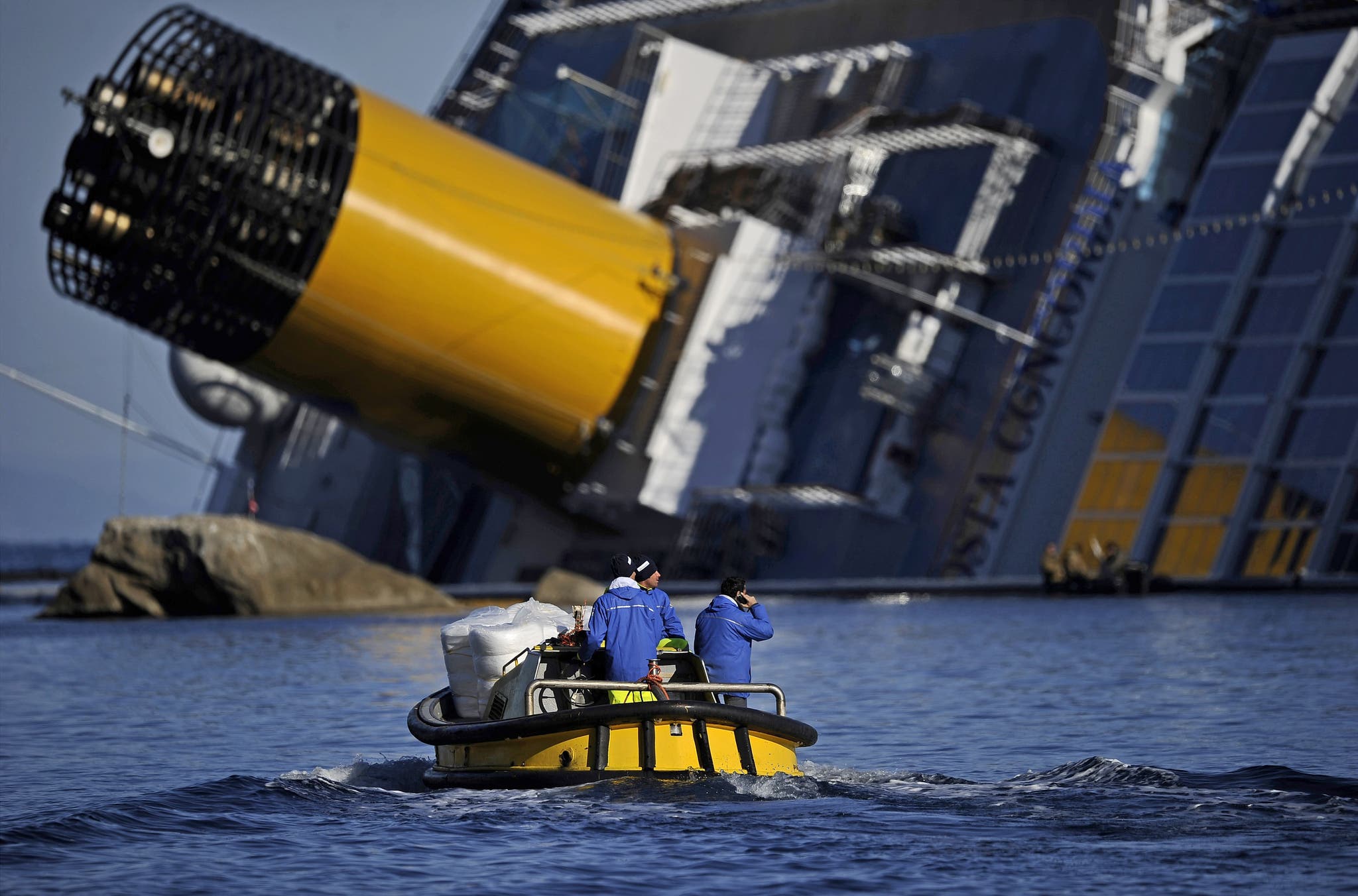
The Concordia was supposed to take passengers on a seven-day Italian cruise from Civitavecchia to Savona. But when it deviated from its planned path to sail closer to the island of Giglio, the ship struck a reef known as the Scole Rocks. The impact damaged the ship, allowing water to seep in and putting the 4,229 people on board in danger.
Sailing close to shore to give passengers a nice view or salute other sailors is known as a “sail-by,” and it’s unclear how often cruise ships perform these maneuvers. Some consider them to be dangerous deviations from planned routes. In its investigative report on the 2012 disaster, Italy’s Ministry of Infrastructures and Transports found that the Concordia “was sailing too close to the coastline, in a poorly lit shore area…at an unsafe distance at night time and at high speed (15.5 kts).”
In his trial, Captain Schettino blamed the shipwreck on Helmsman Jacob Rusli Bin, who he claimed reacted incorrectly to his order; and argued that if the helmsman had reacted correctly and quickly, the ship wouldn’t have wrecked. However, an Italian naval admiral testified in court that even though the helmsman was late in executing the captain’s orders, “the crash would’ve happened anyway.” (The helmsman was one of the four crew members convicted in court for contributing to the disaster.)
A Questionable Evacuation
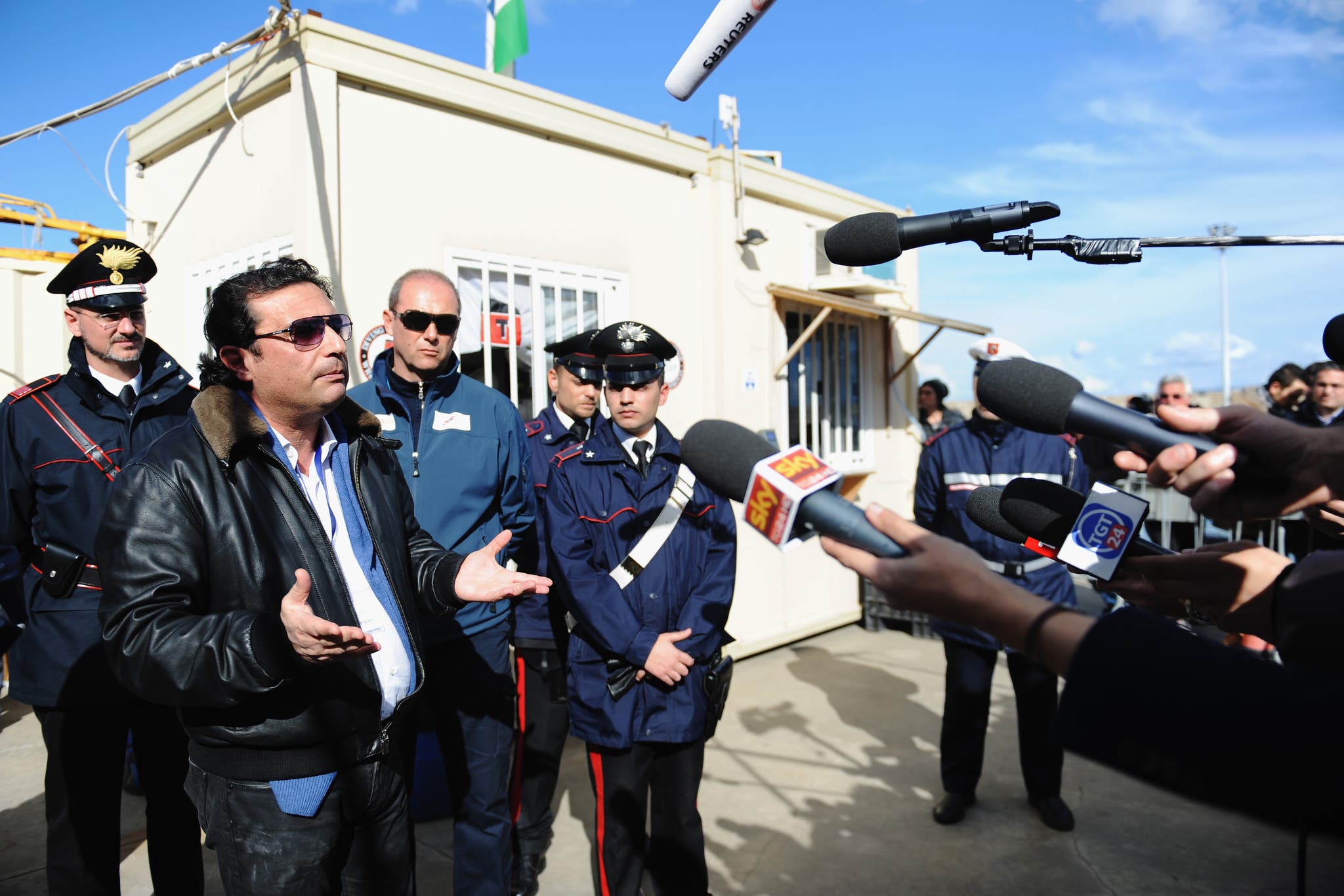
Evidence introduced in Schettino’s trial suggests that the safety of his passengers and crew wasn’t his number one priority as he assessed the damage to the Concordia. The impact and water leakage caused an electrical blackout on the ship, and a recorded phone call with Costa Crociere’s crisis coordinator, Roberto Ferrarini, shows he tried to downplay and cover up his actions by saying the blackout was what actually caused the accident.
“I have made a mess and practically the whole ship is flooding,” Schettino told Ferrarini while the ship was sinking. “What should I say to the media?… To the port authorities I have said that we had…a blackout.” (Ferrarini was later convicted for contributing to the disaster by delaying rescue operations.)
Schettino also didn’t immediately alert the Italian Search and Rescue Authority about the accident. The impact on the Scole Rocks occurred at about 9:45 p.m. local time, and the first person to contact rescue officials about the ship was someone on the shore, according to the investigative report. Search and Rescue contacted the ship a few minutes after 10:00 p.m., but Schettino didn’t tell them what had happened for about 20 more minutes.
A little more than an hour after impact, the crew began to evacuate the ship. But the report noted that some passengers testified that they didn’t hear the alarm to proceed to the lifeboats. Evacuation was made even more chaotic by the ship listing so far to starboard, making walking inside very difficult and lowering the lifeboats on one side, near to impossible. Making things worse, the crew had dropped the anchor incorrectly, causing the ship to flop over even more dramatically.
Through the confusion, the captain somehow made it into a lifeboat before everyone else had made it off. A coast guard member angrily told him on the phone to “Get back on board, damn it!” —a recorded sound bite that turned into a T-shirt slogan in Italy.
Schettino argued that he fell into a lifeboat because of how the ship was listing to one side, but this argument proved unconvincing. In 2015, a court found Schettino guilty of manslaughter, causing a shipwreck, abandoning ship before passengers and crew were evacuated and lying to authorities about the disaster. He was sentenced to 16 years in prison. In addition to Schettino, Ferrarini and Rusli Bin, the other people who received convictions for their role in the disaster were Cabin Service Director Manrico Giampedroni, First Officer Ciro Ambrosio and Third Officer Silvia Coronica.

Sign up for Inside History
Get HISTORY’s most fascinating stories delivered to your inbox three times a week.
By submitting your information, you agree to receive emails from HISTORY and A+E Networks. You can opt out at any time. You must be 16 years or older and a resident of the United States.
More details : Privacy Notice | Terms of Use | Contact Us
Ten years on, Costa Concordia shipwreck still haunts survivors, islanders
- Medium Text

Sign up here.
Philip Pullella reported from Rome; Additional reporting by Yara Nardi, writing by Philip Pullella; Editing by Emelia Sithole-Matarise
Our Standards: The Thomson Reuters Trust Principles. New Tab , opens new tab

World Chevron

Kremlin says, without stating evidence, that Ukrainian fire hit Kyiv children's hospital
Russia denied on Tuesday that it had attacked a Kyiv children's hospital and said, without providing evidence, that Ukrainian anti-missile fire was to blame for Monday's strike.

Switch language:

The world’s worst cruise ship disasters
Tragedies aboard cruise ships live on in infamy as the sinking of RMS Titanic, the biggest cruise disaster in history, bears witness. Ship-technology.com lists the worst ever cruise ship disasters.
- Share on Linkedin
- Share on Facebook
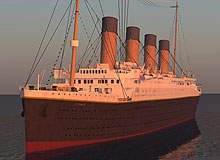
The World’s Deadliest Cruise Ship Disasters
Rms titanic.
The sinking of RMS Titanic in April 1912 remains the worst, and the most infamous, cruise ship disaster in history. The sinking of the biggest passenger ship ever built at the time resulted in the death of more than 1,500 of the 2,208 people onboard.
The accident occurred when the ship hit an iceberg while cruising at its maximum speed of 23k on her maiden voyage from Southampton to New York City. The massive loss of life in the North Atlantic Ocean resulted mainly from hypothermia.
Go deeper with GlobalData

Russia: Falling Voice Revenue and Macroeconomic Uncertainty to Slow...
Disruptor profile: day zero diagnostics, inc., premium insights.
The gold standard of business intelligence.
Find out more
Related Company Profiles
Parsons corp, newport news ship building, meyer werft gmbh, wolff corporation.
RMS Titanic was the second of three Olympic-class ocean liners operated by White Star Line. It was constructed by the Harland and Wolff shipyard in Belfast in three years and was designed by the naval architect Thomas Andrews.
RMS Titanic measured 269.11m in length, 28.042m in breadth, had a gross tonnage of 46,328t and comprised nine decks. The cruise ship was equipped with 20 lifeboats for 1,178 people.
The steamship’s three propellers were driven by two four-cylinder, triple-expansion, inverted reciprocating steam engines and one four-blade low-pressure Parsons turbine.
RMS Lusitania
The sinking of RMS Lusitania in May 1915, after being hit by the German military submarine U-20, caused 1,201 deaths during a voyage from New York to Liverpool. She was considered the largest, fastest and most luxurious ship in the world at the time of her launch in June 1906.
How well do you really know your competitors?
Access the most comprehensive Company Profiles on the market, powered by GlobalData. Save hours of research. Gain competitive edge.

Your download email will arrive shortly
Not ready to buy yet? Download a free sample
We are confident about the unique quality of our Company Profiles. However, we want you to make the most beneficial decision for your business, so we offer a free sample that you can download by submitting the below form
The Lusitania disaster resulted in the death of many Americans and became one of the major reasons behind the US entering World War I.
The German submarine targeted the submarine as a naval ship, as it was also carrying war weapons for the British.
RMS Lusitania was built by John Brown and Co. of Scotland and completed its maiden voyage in September 1907. The steamship was owned and operated by Cunard Company; a rival of White Star Line, which owned the Titanic.
RMS Lusitania had an overall length of 239.8m, beam of 26.7m, draft of 10.2m, depth of 18.4m, gross tonnage of 31,550t and ten decks. It was designed to accmmodate 2,165 passengers and 827 crew members. It was equipped with four 375kW generator sets and possessed a service speed of 25k and a maximum speed of 26.35k.
RMS Empress of Ireland
RMS Empress of Ireland, which sank in the Saint Lawrence River in May 1914, claimed the lives of 1,012 people out of the 1,477 people onboard. It was the second major cruise ship disaster after the Titanic disaster. The Ocean Liner operated on the North Atlantic route between Quebec and Liverpool in England.
The passenger steamship collided with the 6,000t Norwegian collier, the Storstad, following a thick fog which engulfed the river. Just five of the 42 lifeboats could be launched into the water due to the listing of the vessel on her starboard side. The accident was aggravated by the cold conditions, failure to close the ship’s watertight doors and failure to close all portholes aboard.
RMS Empress of Ireland was owned by Canadian Pacific Steamship Company. It was designed by Francis Elgar and built by Fairfield Shipbuilding and Engineering. The ocean liner was launched in January 1906 and completed her maiden voyage from Liverpool to Montreal in June 1906.
The cruise ship was 168m long, its beam measured 20m and gross tonnage was 14,191t. The ship was equipped with two steam engines and two quadruple expansion propellers, which provided a maximum operating speed of 20k.
MS Estonia, formerly known as Viking Sally, Silja Star and Wasa King during different periods from 1980 to 1993, sank in September 1994 during its voyage from Tallinn to Stockholm, resulting in 852 deaths, while 137 people were saved through rescue operations.
The cruise ferry accident was caused by rough sea conditions in the Baltic Sea, when wind speeds ranged from 35mph to 45mph. The bad sea conditions forced the ship to initially list on the starboard side and later sink completely.
The ferry was constructed by Meyer Werft at its shipyard in Papenburg, Germany, in 1980. The ferry, initially named Viking Sally, was delivered in June 1980 to its first owner Rederi Ab Sally. The vessel was operated by EstLine from 1993 to 1994.
MS Estonia measured 155.43m in length, 24.21m in breadth, had a draught of 5.55m, a gross tonnage of 15,598t and featured nine decks and ten lifeboats. The vessel was equipped with four 4,400kW diesel engines connected to two propeller shafts, and had an operational speed of 21k. The cruise ferry had capacity to accommodate 2,000 passengers and 460 cars.
SS Eastland
The SS Eastland disaster in July 1915 claimed more than 844 lives out of the 2,500 people onboard. The disaster occurred when the ship listed while being still tied to a dock in the Chicago River during preparations to cruise to Michigan City.
The probable causes of the disaster are believed to be the flaws in its design and construction, inadequacy of its ballast tanks and overloading. The accident occurred when the passengers embarked the ship. The ship initially listed to the starboard side and further to portside, throwing off passengers and trapping some in the interior cabins.
SS Eastland was owned by Michigan Transportation Company and operated by Chicago-South Haven Line. It was constructed by Jenks Ship Building Company, which specialised in constructing freighters but had no prior experience in construction of passenger vessels. The vessel was launched in May 1903.
The cruise ship had an overall length of 275m, width of 38m and gross tonnage of 1,961t. It was equipped with two triple expansion steam engines, four scotch boilers and two shafts. The vessel was designed for a top speed of 16.5k. It was equipped with 11 life boats and 37 life rafts.
Saint-Philibert Cruise Ship
Saint-Philibert was a twin screw-propelled small cruise ship that met with disaster in June 1931 resulting in the loss of about 500 lives, sparing just eight passengers while on its homeward run on the Loire Estuary in France.
The disaster was induced by harsh storms driving the passengers to take shelter behind the machinery casings, which caused the ship to list over. It was further struck by a wave causing her to sink. The ship, which carried approximately 500 people during the voyage, exceeded the normal carrying capacity by about 80%.
The inadequacy of the ship’s speed to face such waves, lack of coverings for shelter and absence of communication equipment further aggravated the situation. Besides, the captain and crew were considered unqualified.
Saint-Philibert cruise ship measured 32m in length and 6.4m in breadth, and had a draft of 2.74m and gross tonnage of 189t.
SS Admiral Nakhimov
The SS Admiral Nakhimov disaster in August 1986 resulted in the death of 423 people, mostly Ukranians, out of the 1,234 people onboard. The accident occurred in the Tsemes Bay near the port of Novorossiysk enroute Sochi.
The cruise ship collided with the large bulk carrier Pyotr Vasev at a speed of five knots, causing it to sink within a few minutes. The accident was caused by negligence of the captains of the two ships. The captain of Pyotr Vasev failed to heed the warning announced from SS Admiral Nakhimov, while the captain of Admiral Nakhimov was absent on the bridge at the time of the tragedy.
The passenger liner was originally named SS Berlin III and operated on the Crimean-Caucasian line. It was owned by Norddeutscher Lloyd and constructed by Bremer Vulkan.
SS Admiral Nakhimov had an overall length of 174m, beam of 21.02m and gross tonnage of 17,053t. It had a capacity to accommodate 1,125 passengers and 354 crew, and a cruise speed of 16k.
Aleksandr Suvorov
Aleksandr Suvorov, a river cruise ship of the Valerian Kuybyshev-class, met with disaster in June 1983 resulting in the death of 176 people out of the 415 people onboard, while cruising on the Volga-Don basin in Russia. The blame for the accident was placed on the captain who failed to prevent the accident and had not provided a proper order.
Just prior to the accident, an auction to be held at the cinema hall was announced, leading the passengers to the upper deck of the ship. The ship, which was cruising at a speed of about 13.5k at the time, crashed onto a bridge, failing to pass through the second span of the bridge. A freight train passing through the bridge was also affected by the crash, causing some cars to derail and fall on the ship.
Volga-Don Shipping Company was the operator of the ship at the time. Slovenské Lodenice constructed the vessel in Komárno, Czechoslovakia. The ship was restored after the accident and is currently operated by Vodohod.
Aleksander Suvorov has an overall length of 135.75m and width of 16.8m, and is comprised of four decks. It can accommodate 400 passengers and 83 crew, and runs on a 6CHRN36/45 (EG70 -5) diesel engine.
SS Morro Castle
The SS Morro Castle disaster in September 1934 resulted in the loss of more than 137 passengers and crew out of the 318 passengers and 240 crew onboard. The cruise ship was on its 174th return voyage to New York City from Havana.
The disaster was caused by a fire, which emanated from the cruise ship’s library and engulfed the entire ship. The fire was worsened by bad weather, inadequate crew and the ship’s design, which incorporated easily flammable interior materials. Just 12 lifeboats were launched out of the many lifeboats capable of rescuing 408 people.
The ship was owned by Agwi Navigation Co. and operated by Ward Line. It was constructed in 1930 at a cost of approximately $5m by Newport News Shipbuilding. The vessel completed her maiden voyage in August 1930 and served Ward Line along with its sister vessel SS Oriente for four years.
SS Morro Castle was 155m long, 21.6m wide and 11.9m deep, and had a capacity to carry 489 passengers and 240 crew. The steam turbo-electric liner was propelled by two turbines and sailed at a speed of 20k.
SS Andrea Doria
The SS Andrea Doria collided with the eastbound Swedish passenger liner Stockholm due to poor visibility caused by a thick fog. The disaster took place in July 1956 near the coast of Nantucket, Massachusetts, while cruising towards New York City resulting in the death of 52 people, while 1,660 people were rescued.
It is considered the world’s first major radar-assisted collision at sea, as the cause of the accident is assumed to be from the misreading of the radar. It was struck just aft and below the starboard bridge, and sank after 11 hours.
The ocean liner was owned by Italian Line and constructed by Ansaldo Shipyards of Genoa, Italy, at a cost of approximately $30m. It was launched in June 1951 and set out on its maiden voyage in January 1953.
SS Andrea Doria measured 212m in length, had a beam of 27m and a gross tonnage of 29,100t. It featured ten decks and was equipped with two steam turbines providing a top speed of 23k.
Sign up for our daily news round-up!
Give your business an edge with our leading industry insights.
More Relevant
How AI can transform post-Brexit shipping
No east coast port congestion reported post-baltimore , hyundai marine solution and neptune lines agree on eplo services, us treasury sanctions four entities and one vessel for violating russian oil price cap, sign up to the newsletter: in brief, your corporate email address, i would also like to subscribe to:.
Ship Technology In Brief
Ship Technology Global : Ship Technology Focus (monthly)
I consent to Verdict Media Limited collecting my details provided via this form in accordance with Privacy Policy
Thank you for subscribing
View all newsletters from across the GlobalData Media network.
Target Circle Week is back! Expert-picked finds up to 57% off
- Share this —

- Watch Full Episodes
- Read With Jenna
- Inspirational
- Relationships
- TODAY Table
- Newsletters
- Start TODAY
- Shop TODAY Awards
- Citi Concert Series
- Listen All Day
Follow today
More Brands
- On The Show
- TODAY Plaza
10 years later, Costa Concordia survivors share their stories from doomed cruise ship
Ten years after the deadly Costa Concordia cruise line disaster in Italy, survivors still vividly remember scenes of chaos they say were like something straight out of the movie "Titanic."
NBC News correspondent Kelly Cobiella caught up with a group of survivors on TODAY Wednesday, a decade after they escaped a maritime disaster that claimed the lives of 32 people. The Italian cruise ship ran aground off the tiny Italian island of Giglio after striking an underground rock and capsizing.
"I think it’s the panic, the feeling of panic, is what’s carried through over 10 years," Ian Donoff, who was on the cruise with his wife Janice for their honeymoon, told Cobiella. "And it’s just as strong now."
More than 4,000 passengers and crew were on board when the ship crashed into rocks in the dark in the Mediterranean Sea, sending seawater rushing into the vessel as people scrambled for their lives.
The ship's captain, Francesco Schettino, had been performing a sail-past salute of Giglio when he steered the ship too close to the island and hit the jagged reef, opening a 230-foot gash in the side of the cruise liner.
Passengers struggled to escape in the darkness, clambering to get to the life boats. Alaska resident Nate Lukes was with his wife, Cary, and their four daughters aboard the ship and remembers the chaos that ensued as the ship started to sink.
"There was really a melee there is the best way to describe it," he told Cobiella. "It's very similar to the movie 'Titanic.' People were jumping onto the top of the lifeboats and pushing down women and children to try to get to them."
The lifeboats wouldn't drop down because the ship was tilted on its side, leaving hundreds of passengers stranded on the side of the ship for hours in the cold. People were left to clamber down a rope ladder over a distance equivalent to 11 stories.
"Everybody was rushing for the lifeboats," Nate Lukes said. "I felt like (my daughters) were going to get trampled, and putting my arms around them and just holding them together and letting the sea of people go by us."
Schettino was convicted of multiple manslaughter as well as abandoning ship after leaving before all the passengers had reached safety. He is now serving a 16-year prison sentence .
It took nearly two years for the damaged ship to be raised from its side before it was towed away to be scrapped.
The calamity caused changes in the cruise industry like carrying more lifejackets and holding emergency drills before leaving port.
A decade after that harrowing night, the survivors are grateful to have made it out alive. None of the survivors who spoke with Cobiella have been on a cruise since that day.
"I said that if we survive this, then our marriage will have to survive forever," Ian Donoff said.
Scott Stump is a trending reporter and the writer of the daily newsletter This is TODAY (which you should subscribe to here! ) that brings the day's news, health tips, parenting stories, recipes and a daily delight right to your inbox. He has been a regular contributor for TODAY.com since 2011, producing features and news for pop culture, parents, politics, health, style, food and pretty much everything else.


Alice Munro’s daughter controversy: Inside the accusations rocking the literary world

Bebe Rexha kicks out concertgoer for throwing object year after she was injured

Caitlin Clark is in her first season in the WNBA. How to watch her next game

What time is ‘The Bachelorette’ on tonight? How to watch Season 21 premiere live and streaming online

Comedian from ‘Anchorman’ and ‘Mr. Show’ pleads guilty in Jan. 6 Capitol attack

Scarlett Johansson is bewildered by husband Colin Jost's Olympic gig — in Tahiti
Paris olympics.

Here’s the 2024 Olympic roster for the US men’s national soccer team: EXCLUSIVE
Lebron james says playing with his son in the nba will be his ‘greatest accomplishment'.

LeBron James re-signs with Lakers, opening door to first father-son teammates in NBA history

Caitlin Clark becomes 1st WNBA rookie to post triple-double
10 years later, Costa Concordia disaster is still vivid for survivors
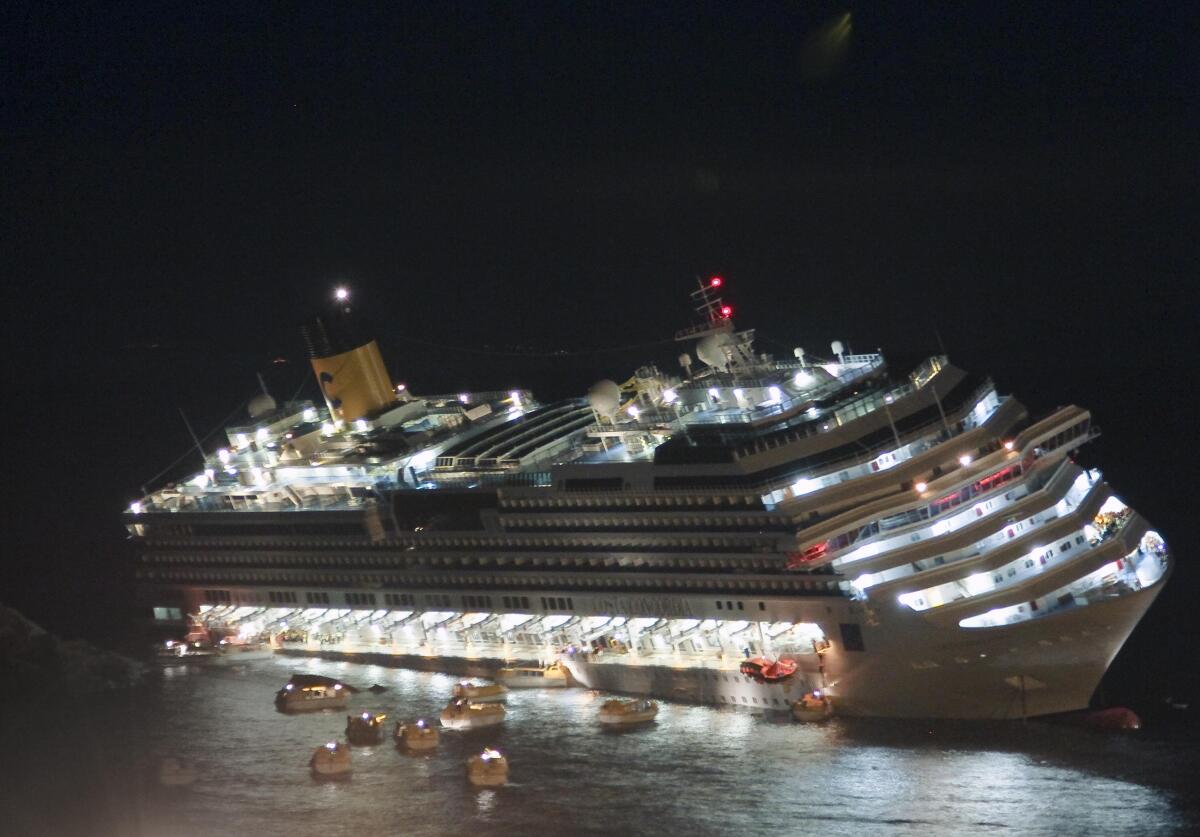
- Copy Link URL Copied!
Ten years have passed since the Costa Concordia cruise ship slammed into a reef and capsized off the Tuscan island of Giglio . But for the passengers on board and the residents who welcomed them ashore, the memories of that harrowing, freezing night remain vividly etched into their minds.
The dinner plates that flew off the tables when the rocks first gashed the hull. The blackout after the ship’s engine room flooded and its generators failed. The final mad scramble to evacuate the listing liner and then the extraordinary generosity of Giglio islanders who offered shoes, sweatshirts and shelter until the sun rose and passengers were ferried to the mainland.
Italy on Thursday is marking the 10th anniversary of the Concordia disaster with a daylong commemoration that will end with a candlelit vigil near the moment the ship hit the reef: 9:45 p.m. on Jan. 13, 2012. The events will honor the 32 people who died that night, the 4,200 survivors, but also the residents of Giglio, who took in passengers and crew and then lived with the Concordia’s wrecked carcass off their shore for another two years until it was righted and hauled away for scrap.
“For us islanders, when we remember some event, we always refer to whether it was before or after the Concordia,” said Matteo Coppa, who was 23 and fishing on the jetty when the darkened Concordia listed toward shore and then collapsed onto its side in the water.
“I imagine it like a nail stuck to the wall that marks that date, as a before and after,” he said, recounting how he joined the rescue effort that night, helping pull ashore the dazed, injured and freezing passengers from lifeboats.
The sad anniversary comes as the cruise industry, shut down in much of the world for months because of the coronavirus pandemic, is once again in the spotlight because of COVID-19 outbreaks that threaten passenger safety. The U.S. Centers for Disease Control last month warned people across-the-board not to go on cruises , regardless of their vaccination status, because of the risks of infection.

A dozen passengers on cruise ship test positive for coronavirus
The passengers, whose infections were found through random testing, were asymptomatic or had mild symptoms, according to the Port of San Francisco.
Jan. 7, 2022
For Concordia survivor Georgia Ananias, the COVID-19 infections are just the latest evidence that passenger safety still isn’t a top priority for the cruise ship industry. Passengers aboard the Concordia were largely left on their own to find life jackets and a functioning lifeboat after the captain steered the ship close too shore in a stunt. He then delayed an evacuation order until it was too late, with lifeboats unable to lower because the ship was listing too heavily.
“I always said this will not define me, but you have no choice,” Ananias said in an interview from her home in Los Angeles. “We all suffer from PTSD. We had a lot of guilt that we survived and 32 other people died.”
Prosecutors blamed the delayed evacuation order and conflicting instructions given by crew for the chaos that ensued as passengers scrambled to get off the ship. The captain, Francesco Schettino, is serving a 16-year prison sentence for manslaughter, causing a shipwreck and abandoning a ship before all the passengers and crew had evacuated.
Ananias and her family declined Costa’s initial $14,500 compensation offered to each passenger and sued Costa, a unit of U.S.-based Carnival Corp., to try to cover the cost of their medical bills and therapy for the post-traumatic stress they have suffered. But after eight years in the U.S. and then Italian court system, they lost their case.
“I think people need to be aware that when you go on a cruise, that if there is a problem, you will not have the justice that you may be used to in the country in which you are living,” said Ananias, who went onto become a top official in the International Cruise Victims association, an advocacy group that lobbies to improve safety aboard ships and increase transparency and accountability in the industry.
Costa didn’t respond to emails seeking comment on the anniversary.
Cruise Lines International Assn., the world’s largest cruise industry trade association, stressed in a statement to the Associated Press that passenger and crew safety were the industry’s top priority, and that cruising remains one of the safest vacation experiences available.
“Our thoughts continue to be with the victims of the Concordia tragedy and their families on this sad anniversary,” CLIA said. It said it has worked over the past 10 years with the International Maritime Organization and the maritime industry to “drive a safety culture that is based on continuous improvement.”
For Giglio Mayor Sergio Ortelli, the memories of that night run the gamut: the horror of seeing the capsized ship, the scramble to coordinate rescue services on shore, the recovery of the first bodies and then the pride that islanders rose to the occasion to tend to the survivors.
Ortelli was later on hand when, in September 2013, the 115,000-ton, 1,000-foot long cruise ship was righted vertical off its seabed graveyard in an extraordinary feat of engineering. But the night of the disaster, a Friday the 13th, remains seared in his memory.
“It was a night that, in addition to being a tragedy, had a beautiful side because the response of the people was a spontaneous gesture that was appreciated around the world,” Ortelli said.
It seemed the natural thing to do at the time. “But then we realized that on that night, in just a few hours, we did something incredible.”
More to Read

Captain gets four-year sentence for Conception boat disaster
May 2, 2024
More than 60 people drown after a migrant vessel capsizes off Libya, U.N. says
Dec. 17, 2023
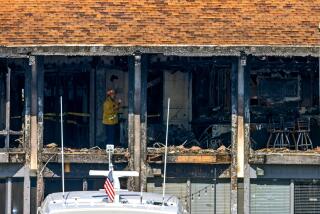
‘Nothing left’: After California Yacht Club fire, residents mourn loss of a beloved spot
Dec. 15, 2023
Start your day right
Sign up for Essential California for news, features and recommendations from the L.A. Times and beyond in your inbox six days a week.
You may occasionally receive promotional content from the Los Angeles Times.
More From the Los Angeles Times

Column: What too many Republicans still don’t understand about Donald Trump’s agenda

Steve Garvey has been quiet since the March primary. So what was he doing in Israel?

Hollywood Inc.
Alec Baldwin is on trial for ‘Rust’ shooting: How did we get here?
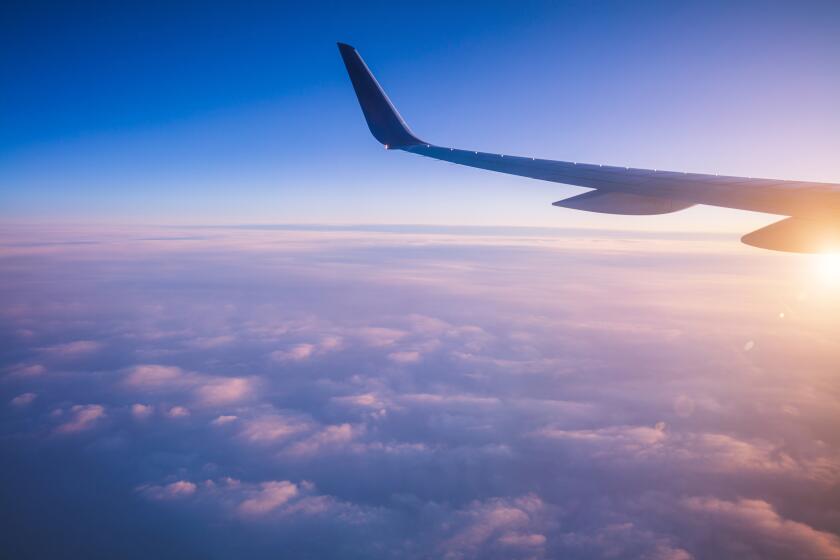
World & Nation
Israel’s ‘GPS spoofing’ tricks missiles, but also commercial airplanes, dating apps in Mideast
- Election 2024
- Entertainment
- Newsletters
- Photography
- AP Investigations
- AP Buyline Personal Finance
- AP Buyline Shopping
- Press Releases
- Israel-Hamas War
- Russia-Ukraine War
- Global elections
- Asia Pacific
- Latin America
- Middle East
- Election Results
- Delegate Tracker
- AP & Elections
- Auto Racing
- 2024 Paris Olympic Games
- Movie reviews
- Book reviews
- Financial Markets
- Business Highlights
- Financial wellness
- Artificial Intelligence
- Social Media
Defunct 1950s-era cruise ship takes on water and leaks pollutants in California river delta
This photo provided by the U.S. Coast Guard District 11 shows The Aurora, a non-operational 294-foot cruise ship moored northwest of Stockton, Wednesday, May 22, 2024, that began to sink and discharge product. A containment boom has been placed around the defunct 1950s-era cruise ship that began sinking and leaking pollution in California’s Sacramento-San Joaquin River Delta, authorities said. (California Department of Fish and Wildlife via AP)
This photo provided by the U.S. Coast Guard shows official representatives from the U.S. Coast Guard, the California Department of Fish and Wildlife and the City of Stockton respond to the sinking vessel Aurora, a non-operational 294-foot cruise ship permanently moored northwest of Stockton on Wednesday, May 22, 2024. A containment boom has been placed around a defunct 1950s-era cruise ship that began sinking and leaking pollution in California’s Sacramento-San Joaquin River Delta, authorities said. (Petty Officer 2nd Class Edward Wargo/U.S. Coast Guard via AP)
- Copy Link copied
STOCKTON, Calif. (AP) — A containment boom has been placed around a defunct 1950s-era cruise ship that began sinking and leaking pollution in California’s Sacramento-San Joaquin River Delta, authorities said.
The 294-foot (90-meter) ship permanently moored in Little Potato Slough northwest of the city of Stockton began to sink in 13 feet (4 meters) of water on Wednesday, the U.S. Coast Guard said in a statement.
A sheen was observed on the water, and containment booms were deployed around the vessel and the city’s water intake pump station, the Coast Guard said. Photographs show the stern low in the water next to the slough’s grassy embankment.
It was not immediately clear what was leaking. The Coast Guard said the vessel recently changed ownership, so details about what pollutants were on board were unknown. The San Joaquin County Sheriff’s Office said the ship was leaking diesel fuel and oil.
A wildlife care organization was notified, but no oiled wildlife had been observed, the Coast Guard said.
The ship, currently known as the MV Aurora, was built in Germany in 1955 and formerly named Wappen von Hamburg. The ship moved around the world and ended up in the delta when a California man bought it in 2008 with dreams of restoring it as a shoreline attraction.

- Cruise News
Sunk California Cruise Ship Refloated After Leaking 14,900 Gallons of Waste

Andrea Santillan
- June 27, 2024
One month after authorities were alerted about a sinking cruise ship in the California Delta, officials confirmed that the 300-foot vessel had been refloated.

Thousands of gallons of contaminated water have been removed as teams continue to mitigate the spill and keep the ship afloat.
In late May, authorities in California learned that the Aurora, an abandoned 1950s cruise ship, was sinking while leaking fuel and oil into the Sacramento-San Joaquin River Delta.

By the time the Coast Guard arrived, the ship’s rear had sunk 13 feet. The agency limited contamination by cordoning off the wetlands and deploying a boom around the vessel.
The California Department of Fish and Wildlife (CDFW) and the Office of Spill Prevention and Recovery (OSPR) later joined forces to drain the water from the vessel with dewatering pumps.
What was the ship doing in the Northern California River?

Aurora is currently in Little Potato Slough, an area in the San Joaquin River near Stockton.
Built in 1955, the 69-year-old ship was West Germany’s first large vessel after World War II. It was also the inspiration for the 1970 TV show The Love Boat and was featured in the James Bond film From Russia With Love.
Because of its storied past, the owner reportedly spent over $1.1 million towards its restoration before abandoning the project and selling it to another owner in 2023.
Due to the significant hazards and risks posed by abandoned ships, the Abandoned and Derelict Vessel Removal Act is being explored. If it is ratified into law, it will establish more efficient processes for the removal of vessels and demand greater accountability from owners.
Recent Posts
Royal caribbean taps meghan trainor as godmother for new mega ship, sitka, alaska rejects third petition to cap cruise passenger numbers, world cruise ceo addresses delays, announces new launch date [video], uber takes to the water with boats in european cruise port, share this post, related posts.

Travel Agent Leaves Carnival Cruise Passengers Without Refunds After Port Cancellation

3 Cruise Ships Earn Perfect Cleanliness Scores from the CDC

Bringing you 15 years of cruise industry experience. Cruise Radio prioritizes well-balanced cruise news coverage and accurate reporting, paired with ship reviews and tips.
Quick links
Cruise Radio, LLC © Copyright 2009-2024 | Website Designed By Insider Perks, Inc
How Many Cruise Ships Have Sunk in the Past 100 Years?
Home » How Many Cruise Ships Have Sunk in the Past 100 Years?
Last updated on January 11th, 2024 at 10:24 am
Cruises are one of the safest options for vacations, but in the past 100 years there have been some incidents with cruise ships sinking . Here are some notable ones in the past 100 years.
Titanic (1912) The most famous cruise ship sinking in history, the Titanic sank after colliding with an iceberg.
Empress of Ireland (1914) This large passenger liner sank after colliding with a Norwegian cargo ship, the Storstad, during foggy weather.
Lusitania (1915) For a few months before her sinking, the Lusitania was the largest passenger ship in the world. A casualty of WWI, she was hit by a torpedo from a German U-boat off the south coast of Ireland.
Britannic (1916) Sister ship of the Titanic, during WWI she struck a German naval mine off the coast of a Greek island and sank in less than an hour.
Princess Mafalda (1927) When a propeller shaft broke and damaged the hull of the ship, the Princess Mafalda sank off the coast of Brazil.
Saint Philibert (1931) A smaller cruise ship, the Saint Philibert sailed mainly in the Loire River and the French coastline. She sank in bad weather, but was also overloaded with twice her capacity on board.
Georges Philippar (1932) Unfortuanlety, this ocean liner sank on her maiden voyage. There was an electrical fault that sparked and set wood paneling on fire causing her to sink near Italian Somaliland.
SS Morro Castle (1934) A fire on board would disable the ship as it burned through the electrical cables and hydraulic lines that steered the ship. Her captain had died the evening before of an apparent heart attack. The burning ship drifted ashore in the shallow waters off Asbury Park in New Jersy, USA.
Empress of Britian (1940) Another victim of war, The ship was bombed from above in WWII when she was off the coast of Ireland. She was hit by two 550lb bombs.
Andrea Doria (1956) Struck by another ship, the Stockholm, the Andrea Doria began to list at once. This made most of the lifeboats inaccessible. However, because the ship sank slowly there were fourty six people killed, but 1660 passengers and crew were saved by rescue ships.
Bianca C (1961) The Bianca has the dubious distinction of being sunk twice. As a passenger ferry, it was scuttled by the Germans in WWII. When she was sold to Costa Lines and refitted as a cruise ship, she sank for the second time when there was an explosion in the engine room.
Angelina Lauro (1979) This ship caught fire in port at Saint Thomas. The ship burned for several days and was a total loss. While being towed to a scrapyard later that year, the Angelina Lauro sank.
MS Mikhail Lermentov (1986) On a cruise from Sydney that was on a two-week itinerary to New Zealand, the ship hit some rocks while sailing past Cape Jackson.
SS Admiral Nakhimov (1986) While operating cruises in the Black Sea, this ship collided with a freighter. They had communicated with the freighter’s captain who had assured the SS Nakhimov that they would be able to avoid a collision.
MV Jupiter (1988) This Greek-registered ship conducted cruises around the Mediterranean. She sank just 40 minutes after leaving Piraeus with a study cruise. There were 391 British schoolchildren and 84 adults on the ship, along with 110 crew. One child, one teacher and two crew died.
Achille Lauro (1988) The Achille Lauro had several unfortunate events including a hijacking, two collisions with other ships and four onboard fires. The last fire sank the ship off the coast of Somalia.
MTS Oceanos (1991) This ship, sailing from Greece, sank from excessive flooding that was caused by freak waves. It is believed that the waves broke a ventilation pipe that had not been correctly repaired and caused the flooding to be severe. To their shame, the captain and some crew abandoned the ship. It was the entertainers on the ship who gave alarm and guided passengers to safety. The captain and crew members were later convicted.
Sun Vista (1999) The sun set on this ship due to an engine room fire. The fire cut all power to the ship’s operating mechanisms and she sank in the Strait of Malacca.
SeaBreeze (2000) The boiler in the ship broke off and damaged the ship. This happened in 30-foot seas, which caused the ship to take on water and capsize. The ship had no passengers on board as she was headed into port for engine repairs.
Britanis (2000) While being towards a scrapyard in India, this ship began to take on water and list. As there was no one on board, the list was not corrected. The tugboat towing Britianis cut the ship free and it capzied and sank off the coast of Cape Town.
MV Explorer (2007) A small cruise ship, the MV Explorer was the first cruise ship that was specifically used for cruises to the Antarctic Ocean. She struck an iceberg and sank. Her passengers and crew made it to the lifeboats and were rescued after drifting for five hours.
MS Sea Diamond (2007) Striking a reef 430 feet from shore, the Captain was blamed and jailed for this sinking. The sea charts he was using were incorrect, and had stated that the reefs were 187 feet from shore off the island of Santorini in the Aegean Sea.
Costa Concordia (2012) In modern history, the Costa Concordia is the most famous cruise ship that has sunk. It struck an underwater rock off the coast of Tuscany. The Captain was also blamed for taking the ship off course and too close to the shore line. He was found guilty of manslaughter and sentenced to 16 years in prison.
Eastern Star (2015) This Chinese river cruise ship was caught in a storm as she was sailing to Chongqing. The ship sank in just 50 feet of water, but only 12 people of the 456 onboard survived.
Ocean Dream (2016) This ship has many owners and about half a dozen names. After having been abandoned in Thailand for over a year, she sank when she capsized.
Orient Queen (2020) The Orient Queen would sail from Beirut to the eastern Mediterranean. While in port, with no passengers on board, the ship sank after there was a huge ammonium nitrate explosion at the port. Other ships also in port were damaged, but the Orient Queen was the only one to sink.
RECENT POSTS
Cruise news this week, what does it take to keep cruise passengers fed, royal caribbean cruise line loyalty programs: sailing to rewarding adventures, retirement home vs life at sea on a cruise ship, do i need travel insurance for a cruise, the pros and cons of cruising on a smaller cruise ship.
© 2023 cruiseportadvisor All Rights Reserved.
- Book Excursions
- Anchorage, AK
- Baltimore, MD
- Cape Liberty, NJ
- Charleston, SC
- Ft Lauderdale, FL
- Galveston, TX
- Honolulu, HI
- Jacksonville, FL
- L.A. (San Pedro), CA
- Long Beach, CA
- Montreal, QC
- New Orleans, LA
- Norfolk, VA
- NYC – Brooklyn
- NYC – Manhattan
- Port Canaveral, FL
- Quebec City, QC
- San Diego, CA
- San Francisco, CA
- San Juan, PR
- Seattle, WA
- Vancouver, BC
- Whittier, AK
- Alaska & Pacific Northwest
- Central & South America
- Cruise Ports in Bermuda
- Dominican Republic
- Mexico & Mexican Riviera
- Eastern Canada & Quebec
- New England
- Los Angeles (San Pedro), CA
- Fort Lauderdale, FL
- Cruise Blog
- Cruise FAQ’s
National Geographic content straight to your inbox—sign up for our popular newsletters here

Pictures: 5 Cruise Ship Disasters That Changed Travel
Some good may yet come of Italy's Costa Concordia wreck. At least since Titanic, cruise accidents have sparked new safety standards.
FOURTH OF JULY SPECIAL
Get National Geographic magazine for $10 off
Related Topics
- CRUISE SHIPS
You May Also Like

What to pack for a cruise

How to spend 10 days exploring the Croatian islands

Is the cruise industry ready for the rise in solo travel?

Fish, fire and flavours in the southern Japanese city of Kochi

In search of wildlife on a one-day cruise off the coast of Cornwall, UK
- Environment
History & Culture
- History & Culture
- Mind, Body, Wonder
- Paid Content
- Terms of Use
- Privacy Policy
- Your US State Privacy Rights
- Children's Online Privacy Policy
- Interest-Based Ads
- About Nielsen Measurement
- Do Not Sell or Share My Personal Information
- Nat Geo Home
- Attend a Live Event
- Book a Trip
- Inspire Your Kids
- Shop Nat Geo
- Visit the D.C. Museum
- Learn About Our Impact
- Support Our Mission
- Advertise With Us
- Customer Service
- Renew Subscription
- Manage Your Subscription
- Work at Nat Geo
- Sign Up for Our Newsletters
- Contribute to Protect the Planet
Copyright © 1996-2015 National Geographic Society Copyright © 2015-2024 National Geographic Partners, LLC. All rights reserved

Tragic List: Discover How Many Cruise Ships Have Sunk Throughout History
How Many Cruise Ships Have Sunk: Millions of people choose cruise ships for their vacations every year because they provide opulent amenities, thrilling activities, and the chance to see several places in one journey. But sometimes people doubt these enormous floating hotels’ safety, especially when you consider that they might sink.
There have been very few cruise ships that have sunk in the past century. Because of the safety procedures followed by the cruise liner industry, most or all of the passengers and crew survive when a cruise ship sinks.
How Many Cruise Ships Have Sunk
Only twenty-four cruise ships—both river and ocean liners—have sunk since 1912. It’s important to remember that some cruise ship capsizings happen while the ship was being towed or berthed.
Because cruise ships are built sturdy and have current safety mechanisms, we can explain why there aren’t many cruise ship sinkings.
Today’s cruise ships are extremely resistant to sinking because of their emphasis on safety throughout construction. Modern cruise ships are outfitted with a plethora of safety precautions to preserve as many lives as possible in the event of an unfortunate disaster.
Consequently, the death toll from these kinds of incidents is usually rather low.
Sadly, several people lost their lives in some of the first sinkings.
Since 1912, a cruise ship has sunk an average of once every 4.5 years, underscoring how uncommon these incidents are. However, as safety and technology advance and we continue to learn from past tragedies, the number of cruise ship disasters is declining.
While cruise ship sinkings are uncommon, there have been a few famous cases, like the Titanic and the Costa Concordia catastrophe. However, despite these high-profile incidents, the cruise industry does have a remarkable overall safety record.
What percentage of cruise ships sink?
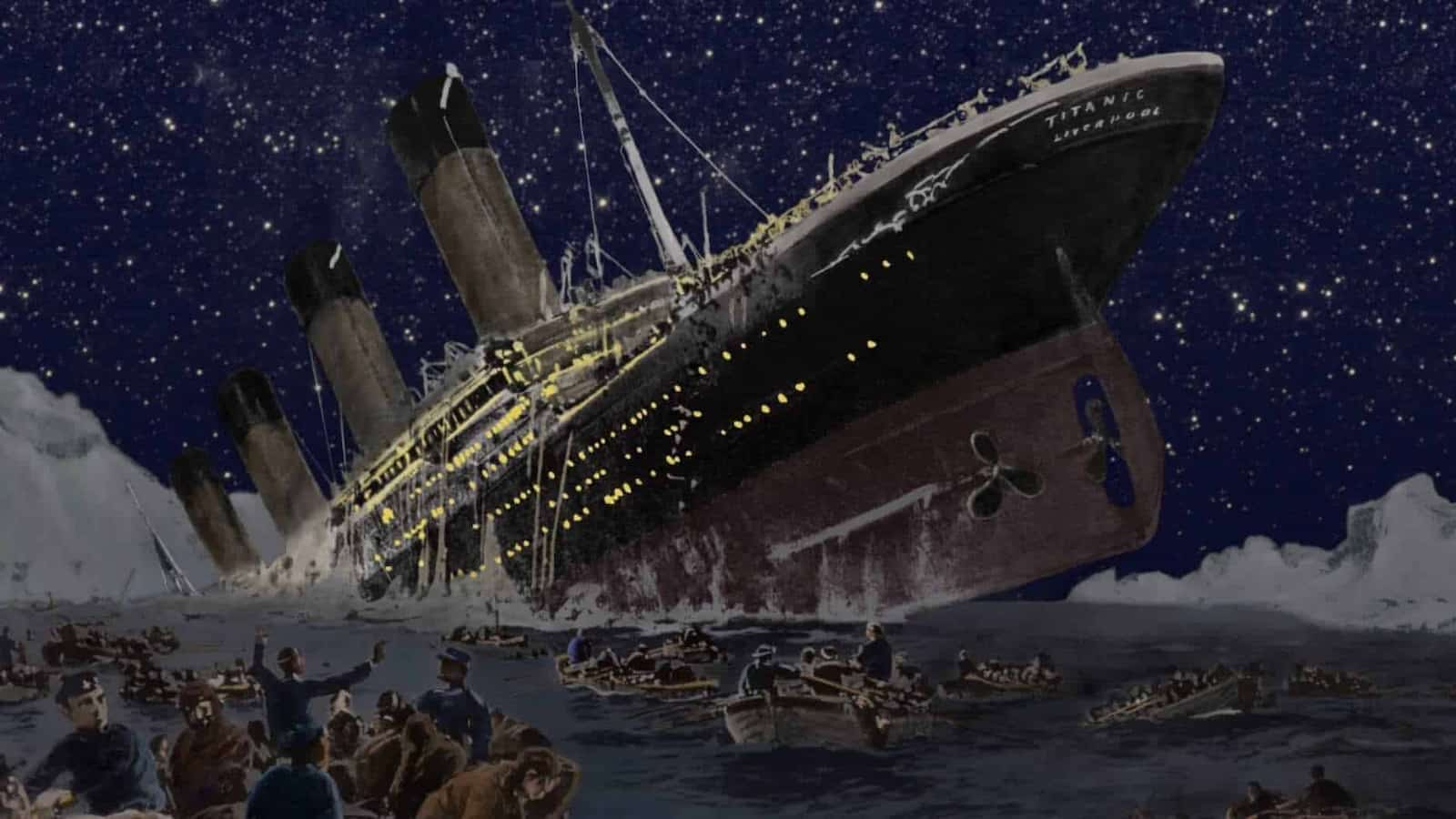
It’s critical to realize that cruise ship sinkings are quite uncommon. There have only been 22 cruise ship sinkings in the last 100 years.
Still, a number of shipwrecks happened while docked or being towed. Given the quantity of cruise ships that are in operation all year round, cruise ship sinkings are quite unusual.
Many safety precautions included into contemporary cruise ships reduce the possibility of a sinking. Strict rules and inspections also contribute to the high standard of safety that is maintained on these boats. Cruise ship sinkings are uncommon, which is partly due to these efforts and technological developments.
Cruise ship worker salary: How much do they make?
In contrast to this total, cruise ships in particular have an even lower frequency of sinking. Although it is difficult to pinpoint the exact number of cruise ship sinkings in the recent past, it is widely accepted that these incidents are uncommon and do not pose a serious threat to passengers.
In conclusion, the rarity of cruise ship sinkings can be attributed to stringent safety rules and contemporary technology. Travelers may relax knowing that their cruise ship experiences will be stable and safe.
Do Cruise Ships Sink Frequently?
Because of stringent restrictions and advanced safety systems, cruise ships seldom sink. In the last century, there have only been 20 cruise ship sinkings.
It is noteworthy that not all of these sinkings contained passengers or caused a sizable number of casualties.
The frequency of cruise ship sinkings has decreased due to advances in navigation technology.
Are Cruise Ships Capable of Sinking?
Cruise ships do occasionally sink, but this is extremely uncommon.
Contemporary cruise ships come with cutting-edge safety technologies that reduce the chance of capsizing. In addition, watertight compartments and improved hull construction keep a ship from absorbing too much water. Cruise ship crew members are also regularly trained in safety exercises and emergency procedures.
Despite these safety precautions, 24 cruise ships and ocean liners have sunk since the RMS Titanic disaster in 1912.
In spite of the disconcerting prospect of a cruise ship sinking, safety remains the cruise industry’s top priority. Compared to other means of transportation, passengers may travel with peace of mind on one of the safest modes.
When Did a Cruise Ship Most Recently Sink?
The last time a cruise ship capsized while carrying people on board was the Costa Concordia, which grounded in Italy in 2012. Thirty-four people perished when the Italian cruise liner struck rocks and subsequently capsized. The accusations made against the ship’s crew, especially Captain Francesco Schettino, who is currently serving a 16-year manslaughter term, made the incident noteworthy as well.
To provide the highest level of security for its patrons, the cruise industry has enacted a number of safety rules and procedures in recent years. These modifications have greatly decreased the quantity of mishaps and sinkings, which has helped to explain why we don’t hear about them as frequently.
Why Do Ships Stay Afloat?

Even while cruise ships, in particular, might be extraordinarily large buildings, their purpose is to float on water with ease. It is because of the buoyancy principle that cruise ships may float. Any object submerged in a fluid (such as water) experiences an upward force equal to the weight of the fluid the object has displaced. This is known as Archimedes’ principle, or the physical law of buoyancy.
The hull form of a ship is a major component that affects its buoyancy. Because of their wide, flat bottoms, ships are able to move a lot of water. This displacement produces an upward force that balances the ship’s weight.
If the density of the cruise ship is lower than that of the water, it will still float.
Steel and aluminum are two examples of strong, lightweight materials used in ships that offer structural support while maintaining a low overall density. In addition, the hull is separated into waterproof sections so that, in the event of damage, water does not flood the entire ship. This design keeps cruise ships from toppling over and aids in maintaining the ship’s buoyancy.
Preventing a ship from capsizing also depends on its stability. A low center of gravity is a feature of ship design. Heavy parts of the ship, including engines and fuel tanks, are located in the lowermost part of the structure to provide a low center of gravity. Even in choppy waters, the ship will stay upright and steady thanks to the design philosophy.
Best Cruises for Adults: 4 Perfect Cruise Lines for Adult Only experience
Overview of How Many Cruise Ships Have Sunk Throughout History
1912’s rms titanic.
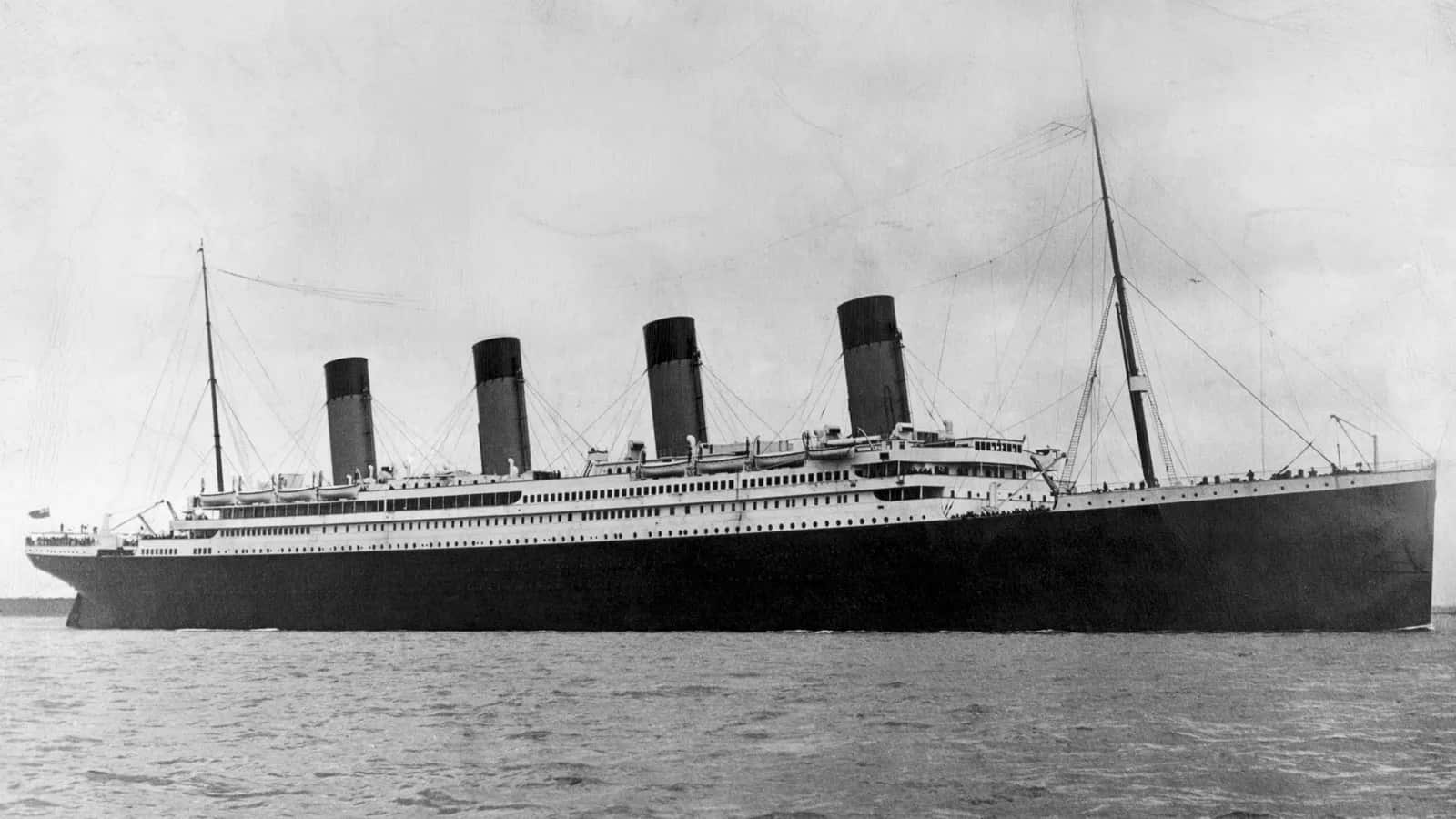
On April 15, 1912, the British passenger ship RMS Titanic sank in the North Atlantic Ocean. When the ship struck an iceberg on its first trip from Southampton, UK, to New York City, it sank. Out of the estimated 2,224 passengers and crew, 1,517 are thought to have perished in the accident.
The Titanic was regarded as an engineering wonder when it was built and was the largest ship ever to sail. With more than 2,200 passengers and crew members on board, she sailed for her maiden transatlantic voyage. Despite multiple alerts of icebergs up ahead on April 14, the Titanic proceeded to travel at a speed of 22 knots.
Lookouts noticed an iceberg on the ship’s course just before midnight. The Titanic suffered damage below the waterline when she met the iceberg on her starboard side due to her inability to turn quickly enough.
It was obvious the ship would sink when water began to fill it. There was a significant death toll from the Titanic accident because there were not enough lifeboats and the water was quite cold. Laws about maritime safety have significantly improved as a result of the disaster.
Empress of Ireland in 1914
Early on May 29, 1914, in the thick fog, the ocean liner RMS Empress of Ireland collided with another ship and sank in Canada’s St. Lawrence River.
There were 1,477 passengers and staff members on board the Empress as it traveled from Quebec City to Liverpool. The Norwegian collier Storstad struck the Empress, causing significant damage and rapid submersion. Despite hasty attempts to evacuate passengers, the ship sank in about fourteen minutes. The accident claimed 1,012 lives from those on board, making it the deadliest marine accident to occur in Canadian history during a peacetime.
1915’s RMS Lusitania
On May 7, 1915, during World War I, a German U-boat torpedo sank the British ocean liner RMS Lusitania, killing 1,198 people—passengers and crew. The Cunard Line-owned Lusitania was torpedoed off the coast of Ireland when it was making her 202 transatlantic voyage from New York to Liverpool.
A second explosion burst from the ship’s hull shortly after the torpedo hit. Due to the significant damage and degree of listing, only six lifeboats were able to descend from the starboard side of the ship.
The ship sank around eighteen minutes after the torpedo hit. Seventy-six out of the 1,962 passengers and crew on board the Lusitania made it out alive.
The RMS Lusitania was allegedly carrying 173 tons of weapons and ammunition, according to the German authorities. Apart from the small arms ammunition listed on the ship’s military cargo, the British government disputes that the ocean liner carried any war weaponry.
1916’s HMHS Britannic
HMHS Britannic was the third and largest Olympic-class ocean liner that White Star Line operated. Constructed as a transatlantic passenger liner, the ship was launched shortly before the outbreak of World War I.
Before Britannic could be used for passenger travel following the start of the war, the British Admiralty seized her and renamed her Britannic as a hospital ship. The Britannic ran into a naval mine that a German U-boat had planted while it was in the Aegean Sea in November 1916.
In approximately 55 minutes, the explosion destroyed much of the ship and caused serious damage. Despite the sinking’s rapid pace, the prompt evacuation saved 1,030 lives. 30 persons sadly lost their lives in the sinking.
1927’s Principessa Mafalda
Off the coast of Brazil in 1927, the Italian transatlantic liner SS Principessa Mafalda sank. The ship departed on her 14-day voyage after a technical delay.
The ship made multiple stops in the ocean during the voyage, indicating that it was not in good shape. The breakage of the starboard propeller shaft on October 25 resulted in numerous hull gashes.
The ship started to absorb water, and the watertight doors could not be closed all the way. It took the ship more than four hours to sink completely. However, miscommunication resulted in 314 fatalities.
1932-Georges Philippar
In 1932, the French passenger liner Georges Philippar caught fire and sank in the Gulf of Aden, killing fifty-four people. On May 16, during her inaugural journey off the coast of Italian Somaliland, Mme Valentin’s opulent cabin’s wood paneling caught fire due to a malfunctioning light switch.
The fire was allowed to spread quickly since there was a delay in reporting it. Captain Vicq tried to put out the fire and beach the ship, but things worsened.
The engine rooms were evacuated, leaving the Georges Philippar adrift. The captain issued a distress call and told the crew and passengers to get off the ship. The French ship Andre Lebon, the two British cargo ships Mahsud and Contractor, and the Soviet tanker Sovietskaïa Neft were the three neighboring vessels that came to the rescue.
Rescuers were able to save 698 people. 54 people died, nevertheless, some of them from desperate jumps overboard.
1934’s SS Morro Castle
On September 7, 1934, at around three in the morning, a fire broke out on board the opulent ocean liner SS Morro Castle, which was traveling from Havana to New York City. Strong winds contributed to the fire’s rapid out-of-control spread.
Chaos broke out as terrified passengers had to decide whether to leap into the sea or stay on the blazing ship, even as efforts were made to put out the fire and launch lifeboats. The ruined Morro Castle ran aground close to Asbury Park, New Jersey, after only six hours.
Only 312 of the 549 occupants, including the crew, made it out alive.
Following investigations, it became clear that a lack of training and preparation for fire safety contributed to the shockingly high death toll. The burned-out wreck, which served as a somber reminder of the horror everyone on board had to endure, remained on the beach until 1935.
The fatal incident made it clear that ocean liners need to strengthen their fireproofing, safety exercises, and crew training.
Empress of Britain – 1940
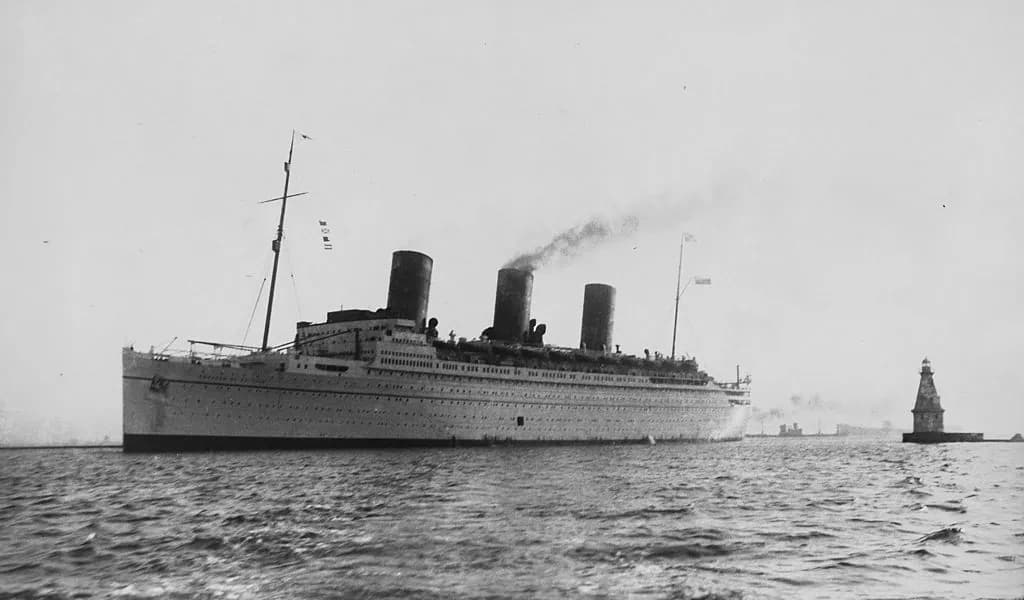
The Canadian Pacific Steamship Company, which the Canadian Pacific Railway and the RMS Empress of Britain owned, transported people and soldiers across the Atlantic during World War II.
The German submarine U-32 fired two torpedoes at the Empress of Britain early on October 26, 1940, as it was cruising roughly 450 miles west of Ireland. The damage was too great, leading the ship to list badly in spite of efforts to prevent flooding.
Lifeboats were hastily lowered into the darkness after the order to evacuate the ship, with some capsizing in the confusion as flares lit up the sky. British navy ships saved 1,259 people from the sinking liner, but 45 unfortunate people perished in the early explosions or drowned.
The graceful British Empress had disappeared under the seas by sunrise, exposing civilian ships to Germany’s merciless submarine warfare techniques.
Andrea Doria – 1956
In July 1956, the Italian ocean liner SS Andrea Doria carried more than 1,700 passengers and crew members on a normal trip from Italy to New York. In extremely foggy conditions, the Andrea Doria and the Swedish ship Stockholm collided on July 25, off the coast of Nantucket, Massachusetts.
Below the waterline, the Stockholm’s bow caused catastrophic damage by severing passenger compartments and stabbing into Andrea Doria’s side. Ten hours later, in excess of 200 feet of water, the mortally damaged Andrea Doria sank in spite of attempts to contain flooding.
Thankfully, 1,660 individuals made it out of the lifeboats. Nevertheless, 46 people died as a result of impact injuries and drowned during the intense crash.
How Cruise Ships Are Built: A 2-Year Process
1961’s Bianca C
The ship Bianca C is special since it sank twice. The first sinking occurred during World War II when a German-operated passenger ferry was sunk.
Before it sank in 1961, the ship’s hull was lifted and converted into a cruise liner.
With more than 600 passengers and crew, the Italian cruise liner Bianca C sailed from Grenada to Italy overnight on September 22, 1961. An explosion in the engine room at midnight caused a fire that swiftly spread throughout the ship.
The captain gave the order for the staff and passengers to leave the burning ship as smoke filled the halls. As other ships raced to help, liferafts and lifeboats were lowered into the murky tropical waters. While the majority of passengers safely evacuated the Bianca C, one staff member unfortunately perished in the explosion. However, the crew and all other passengers made it out safely.
1979 Angelina Lauro
In March 1979, Costa Lines acquired the aging Italian ocean liner Angelina Lauro. When the new cruise line was chartering the ship, it caught fire while berthed in Saint Thomas.
After burning for a few days, the ship was declared completely destroyed. The fire did not claim any lives.
1986’s MS Mikhail Lermentov
Around 1,000 guests and crew perished when the Soviet cruise ship Mikhail Lermentov struck rocks and sank off the coast of New Zealand on February 16, 1986. During the frantic evacuation, the chief electrical engineer sadly drowned, although no passengers were lost.
In a matter of hours, rescue ships and aircraft safely evacuated everyone else on board the sinking ship before it submerged beneath the water. A subsequent investigation found that inadequate navigation had caused the enormous ship to veer dangerously near the rocky reef in low light, rupturing a huge hole in the hull and quickly flooding the liner.
1986’s SS Admiral Nakhimov
On our list, SS Admiral Nakhimov has the most intriguing tale. The ship has sunk three times in total.
It served as a hospital ship for Germany during World War II before being lost.
The ship was turned up to the Soviet Union as payment for reparations. The Germans had hidden mines in the ship’s hull, which detonated and caused the ship to sink a second time, despite Soviet attempts to retrieve its hull.
On August 31, 1986, the SS Admiral Nakhimov sank for the third and last time. In the Black Sea, close to the Strait of Kerch, the Soviet passenger liner and the bulk freighter Pyotr Vasev collided. Admiral Nakhimov’s hull sustained a huge hole from the accident, which quickly caused the ship to flood.
When the electricity went out, the evacuation process became disorganized due to a lack of lifeboats and inadequate leadership. The Admiral Nakhimov sank after capizing in thirty minutes. Sadly, more than 423 people perished.
1988’s MV Jupiter
The British roll-on/roll-off ferry MV Jupiter and the tanker Phoenix II collided on June 21, 1975, as the two were traveling from Dover to Zeebrugge across the English Channel. The accident caused catastrophic flooding by rupturing open the car deck of the MV Jupiter.
The majority of the 585 passengers and crew were evacuated as the Jupiter began to list alarmingly. Tragically, two passengers—a teacher and a student—as well as two crew members perished.
1988 Achille Lauro
As the Italian cruise ship Achille Lauro sailed off Somalia on November 30, 1994, a destructive engine room fire broke out and swiftly got out of control. Tragically, during a nocturnal emergency evacuation, two passengers perished.
Rescue ships and aircraft were able to successfully evacuate all remaining passengers and crew from the burning liner. The ship sank following two days of fierce firefighting.
An engine room explosion was found to be the cause of the safety systems’ deactivation.
MTS Oceanos – 1991
The Greek cruise liner Oceanos sank off the coast of South Africa on August 3, 1991, as a result of severe waves that broke a ventilation pipe. It’s thought that a poor repair made the pipe susceptible to impacts.
A broken ventilation pipe was to blame for the severe flooding. The captain and a few other crew members left the ship as soon as they realized it was sinking.
Amazingly, the entertainment crew stepped up and assisted guests in getting off the sinking ship. Over the following two days, nearby vessels saved all 571 people.
Sun Vista (1999)
The Sun Vista, a cruise liner from Malaysia, capsized in the Malacca Strait on August 8, 1999, due to extreme listing caused by an engine room fire that took off power. The well-trained crew quickly boarded lifeboats with all of the passengers and crew after making a call for assistance from nearby ships.
SeaBreeze (2000)
A catastrophic mechanical failure caused the cruise ship Seabreeze I to swiftly sink on December 17, 2000, when it was sailing about 225 nautical miles off the coast of Virginia. The 21,000 GT, 9-deck passenger ship had just been purchased by Cruise Ventures III, who was traveling from Halifax to Charleston when the catastrophe occurred.
According to reports, the boiler broke away, seriously injuring the engine room of the ship and resulting in significant flooding. The captain yelled “abandon ship” as the 40-year-old Seabreeze quickly began to take on water, requesting that the 34 crew members be rescued right away.
There was a lot of suspicion surrounding the sinking since some people thought it was intentional. The old Seabreeze had a $20 million insurance policy even though its scrap value was probably about $5–6 million.
The vessel capsized in international seas. Maritime authorities questioned Panama’s thoroughness and were dismayed when the ship, which was flying the flag of another country, sank in international waters. This placed Panamanian jurisdiction over the probe.
The captain’s decision to abandon the ship rather than try to salvage it also raised suspicion.
Rescuers from the US Coast Guard thought it was extremely unusual that the ship could sink that quickly. The captain insisted on a full evacuation instead of asking for salvage tugs, which shocked the Coast Guard.
Britannis (2000)
The Britanis experienced a leak in the ship’s rear while en route to an Indian scrapyard. The boat’s owners let it sink after determining that fixing the leak would be too expensive.
The boat was being pulled by tug boats with no one on board. Additionally, no one was hurt in the incident.
2007’s MS Sea Diamond

Sea Diamond sank on April 5, 2007, after going off course and hitting coral near Santorini. When the ship lost power and listed, the crew quickly rescued nearly all 1,195 passengers.
Tragically, two passengers perished in the sinking. The damaged Sea Diamond had submerged in 500 feet of water by the afternoon.
The captain was first accused of veering dangerously near to shore during the investigation; however, it was later found that the area’s maritime charts were erroneous. The boat came aground 131 meters from shore, while the reef was shown on the map as 57 meters.
2007’s MV Explorer
The cruise ship MV Explorer struck an iceberg early on November 23, 2007, causing it to sink off the coast of Antarctica. The iceberg tore open the ship’s hull, resulting in catastrophic flooding.
The well-trained crew quickly evacuated all 154 passengers and crew members onto lifeboats as the crippled ship lost power and leaned precariously close to King George Island. A great emergency reaction saved every life in the dramatic sinking in icy Antarctic waters.
After a five-hour drift on the lift rafts, MS Nordnorge recovered all 154 survivors.
2012’s Costa Concordia
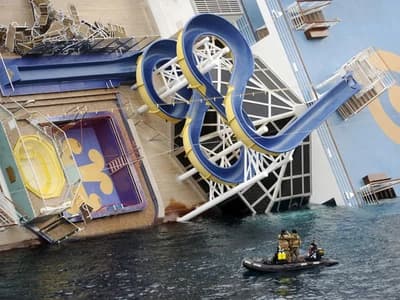
On January 13, 2012, the Costa Concordia cruise ship was wrecked off Giglio Island, Italy. Leaving Civitavecchia in Lazio, the ship, carrying 4,252 people from all over the world, struck a reef during an unofficial salute to local islanders. The Costa Concordia crashed off the Italian island of Giglio on January 13, 2012, killing around 4,252 passengers and crew. A 951-foot cruise liner veered off course and approached too closely.
The impact that ripped a 160-foot gash in the hull led to significant listing and partial sinking.
Despite the ship’s lifeboats, helicopters, and ships, 34 people died in the chaotic aftermath.
Captain Francesco Schettino caused the incident by carelessly deviating from the course. Authorities convicted him of manslaughter and he is currently serving a 16-year prison sentence.
2016’s Ocean Dream
After the owner of the cruise ship went bankrupt in 2015, the Ocean Dream was abandoned without a crew or maintenance personnel at Laem Chabang, Sri Racha, Thailand. In February 2016, the abandoned ship overturned and sank in shallow waters off the coast.
There were unsuccessful attempts to raise the sunken ship. The authorities decided to disassemble and demolish the Ocean Dream on location instead of refloating it. By the end of 2019, the disaster’s visible remnants had been disassembled and salvaged, leaving only the bottom hull of the wreck on the seafloor.
2020’s Orient Queen
The cruise ship Orient Queen suffered terrible damage 1,000 feet away from the big 2020 explosion that tore through Beirut’s dock. The strong blast wave severely damaged the Orient Queen’s hull, which also caused fires to spread, killing two crew members and injuring seven others.
The abandoned cruise ship capsized where it was parked, terminating its 40-year cruise career over the following 48 hours. It was not possible to salvage it.
Related Posts
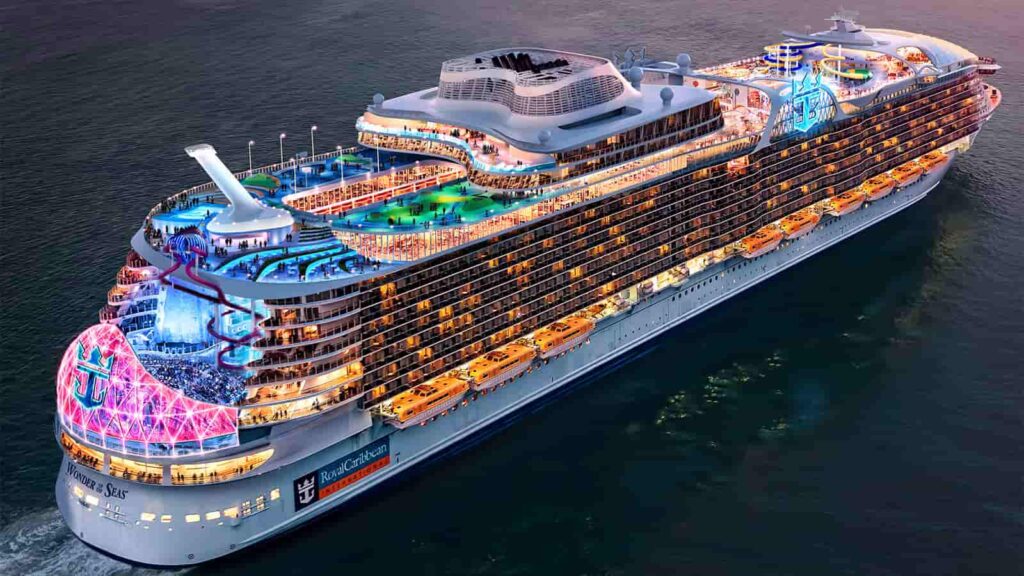
Royal Caribbean Cruises, History, Destinations and Itineraries

Ambassador Cruise Line: Ownership and History
Leave a comment cancel reply.
Your email address will not be published. Required fields are marked *
Save my name, email, and website in this browser for the next time I comment.
An Iranian frigate was seen capsizing at port while next to merchant ships, another black mark for the country's record of naval mishaps
- An Iranian frigate capsized while undergoing repairs at Bandar Abbas, a coastal city on the Strait of Hormuz.
- State media reported that it took on water and lost balance because of a "technical failure."
- Photos show the ship turned on its side amid merchant ships also docked at Bandar Abbas.

Several people were admitted to hospital after an Iranian warship capsized at the port city of Bandar Abbas on Sunday, Iran's state media reported.
The Sahand , a domestically produced Moudge-class frigate, was undergoing repairs when it lost balance and partially sank, the Mehr News Agency reported.
The mishap was because of a "technical failure," the report said.
A separate report several hours later by the Islamic Republic News Agency cited the country's military saying water had leaked into the Sahand's tanks, causing the vessel to turn over.
The military added in IRNA's report that the ship had since "returned to balance." Both news agencies are owned by the Iranian government, which described the vessel as a "destroyer."
Photos released by the agencies show the Sahand floating on its side next to several docked merchant ships. Other images on social media appear to show the vessel tipping over.
BREAKING 🚨 The Iranian warship Sahand has mysteriously capsized at the port of Bandar Abbas, according to ISNA reports. pic.twitter.com/VY0MRxP4pS — Open Source Intel (@Osint613) July 7, 2024
The lasting damage sustained by the vessel isn't immediately clear.
Related stories
The Sahand was launched in 2018 and is named after another Iranian ship that was destroyed by the US in 1988's Operation Praying Mantis .
The original vessel was one of two Iranian naval ships sunk by the US Navy in retaliation for the mining of the USS Samuel B. Roberts, a guided-missile frigate.
Iranian media reported that the new Sahand was equipped with torpedoes, anti-air munitions, cruise missiles, a point-defense system, and close-range weapons that could fire up to 7,000 rounds a minute.
Its capsizing on Sunday is the latest in a string of mishaps for Iran's navy in recent years, including a 2020 friendly-fire incident involving a ship of a similar class.
The Iranian frigate Jamaran was testing an anti-ship missile when it struck the support vessel Konarak in the Gulf of Oman, killing 19 sailors and injuring another 15.
In late 2021, another Moudge-class frigate, the Talayieh, was videoed capsizing at a flooded dry dock in Bandar Abbas.
In June of that year, the Kharg , one of Iran's largest naval vessels, caught fire and sank in the Gulf of Oman after firefighters tried for 20 hours to save the ship. It had embarked on a training mission at the time, local media reported.
Another Moudge-class frigate, the Damavand , ran aground in 2018 and was damaged beyond repair. It had been launched just three years prior.
In a Sunday report covering the Sahand's capsizing , the Iranian state media channel Al-Alalam noted that the US also suffered a near-capsizing in 2022 involving a ship named The Sullivans.
But The Sullivans is a museum ship that served in World War II and the Korean War and was retired in 1965.
It partially sank in April 2022 because of a hull breach, but it was repaired and reopened for visits in August 2022.
Watch: What it's like on board a US aircraft carrier fighting Houthis in the Red Sea
- Main content

The Last US Aircraft Carrier Sunk At War: All About The USS Bismarck Sea
T hese days, the United States has more aircraft carriers than any other country in the world. As of this writing, the U.S. has 11 aircraft carriers and is building more to replace some of its older vessels. The latest carrier class, the Gerald R. Ford, contains the world's largest aircraft carrier capable of carrying close to 100 aircraft . These U.S. aircraft carriers are extremely hard to sink , but that hasn't always been the case. Since the U.S. began using carriers in 1922, several have been claimed by Davy Jones' locker.
Losing an aircraft carrier is a significant loss for any nation, as they don't merely hold a host of aircraft. These carriers are also staffed by hundreds if not thousands of sailors. Since the U.S. began using them in war, over a dozen have been sunk or damaged so severely they were scuttled.
Of course, some were purposely destroyed when testing atomic weapons, but most of America's lost carriers met their fates during wartime operations. Fortunately, the U.S. hasn't lost a carrier in a long time, and with any luck, that will remain the case. The last U.S. aircraft carrier that was sunk during battle was the USS Bismarck Sea (CVE-95), which was used as an escort carrier capable of holding 27 aircraft. It was taken out by two Japanese kamikaze aircraft during the Battle of Iwo Jima on February 21, 1945.
Read more: The 10 Most Legendary Ships Of WW2 Ranked From Worst To Best
The USS Bismarck Sea
The Bismarck Sea was one of many Casablanca-class escort carriers built during World War II. It was commissioned on May 20, 1944 and is the only U.S. vessel named in honor of the Battle of the Bismarck Sea. The carrier ferried aircraft to and from places like Pearl Harbor, Hawaii, and the Marshall Islands. She took part in several operations against Japanese targets through January 1945, and in February, the Bismarck Sea made its way to the island of Iwo Jima.
The Bismarck Sea took on additional fighters, placing seaplanes beneath deck without emptying their fuel tanks. Soon after, Japanese planes approached the carrier, which held 37 aircraft. This was far more than it could accommodate, and when a Japanese plane made it through the carrier's defenses to slam into its hull beneath the deck, it impacted the magazine and started a fire, scattering munitions all over the place. This disabling the ship's steering, but the crew managed to put out the fire.
Just when it looked like the worst was behind the crew of the Bismarck Sea, a second plane slammed into the deck holding the seaplanes laden down with fuel, causing a second huge explosion. Soon, a fire engulfed much of the carrier, and the order to abandon ship was ultimately given. The dangerous conditions made rescue difficult, and the Bismarck Sea sank, taking 318 crew with her.
Read the original article on SlashGear .


IMAGES
VIDEO
COMMENTS
The Sinking of MV Jupiter (October 1988) The MV Jupiter, a Greek cruise ship, started sailing in 1961 as the Moledet. On October 21, 1988, it sank after leaving Piraeus, Greece. An Italian freight ship hit it. The ship had nearly 400 British students, 84 adults, and 110 crew members on a study cruise.
Here, in chronological order, are the 24 cruise ships that have sunk in history: 1. April 1912: Titanic. Titanic Ocean Liner. Perhaps the most infamous cruise ship sinking took place on April 14 ...
1. The Unfateful RMS Titanic. The most infamous cruise ship accident has to be the RMS Titanic. The Olympic-Class Ocean liner was owned by White Star Line and built in Northern Ireland. It was the largest passenger ship of its time, designed by Thomas Andrews, capable of carrying over 3000 people.
The Costa Concordia struck an underwater rock, capsized, and sank, killing 32 passengers. Schettino's worst maritime sin? He abandoned the ship with 300 passengers still onboard. A Coast Guard officer in contact with the ship at the time of the sinking claimed he told Schettino to get back onboard.
MS Costa Concordia in Palma, Majorca, in 2011. Costa Concordia (call sign: IBHD, IMO number: 9320544, MMSI number: 247158500), with 3,206 passengers and 1,023 crew members on board, was sailing off Isola del Giglio on the night of 13 January 2012, having begun a planned seven-day cruise from Civitavecchia, Lazio, Italy, to Savona and five other ports. The port side of the ship struck a reef at ...
Costa Concordia disaster, the capsizing of an Italian cruise ship on January 13, 2012, after it struck rocks off the coast of Giglio Island in the Tyrrhenian Sea.More than 4,200 people were rescued, though 32 people died in the disaster.Several of the ship's crew, notably Capt. Francesco Schettino, were charged with various crimes.. Construction and maiden voyage
Associated Press. 0:00. 1:35. GIGLIO, Italy — Ten years have passed since the Costa Concordia cruise ship slammed into a reef and capsized off the Tuscan island of Giglio. But for the passengers ...
The 8 Worst Cruise Ship Disasters. Somali pirates, icebergs, and coral reefs have ruined many would-be vacations. Carnival Triumph: What was supposed to be a four-day jaunt to the Caribbean became ...
The Italian captain went back onboard the wreck for the first time since the sinking of the cruise ship on January 13, 2012, as part of his trial for manslaughter and abandoning ship.
She is one of the survivors of the shipwreck of the Costa Concordia, the luxury cruise liner that capsized after hitting rocks just off the coast of the small Italian island of Giglio on Jan. 13 ...
Cruise ships have sunk, but very rarely. Cruise ships have sunk in the past, but the instances are very rare. Including the Titanic, 26 ships have sunk since 1912, if you include river cruise ships and ocean liners. Almost 2,000 people have died in these incidents but over half of those can be attributed to ships sinking before 1940.
The sinking of RMS Titanic in April 1912 remains the worst, and the most infamous, cruise ship disaster in history. The sinking of the biggest passenger ship ever built at the time resulted in the death of more than 1,500 of the 2,208 people onboard. The accident occurred when the ship hit an iceberg while cruising at its maximum speed of 23k ...
The sinking of the Costa Concordia: 10 years later. Ten years after the deadly Costa Concordia cruise line disaster in Italy, survivors still vividly remember scenes of chaos they say were like ...
Associated Press. Jan. 12, 2022 2 PM PT. GIGLIO, Italy —. Ten years have passed since the Costa Concordia cruise ship slammed into a reef and capsized off the Tuscan island of Giglio. But for ...
2 of 2 | . This photo provided by the U.S. Coast Guard shows official representatives from the U.S. Coast Guard, the California Department of Fish and Wildlife and the City of Stockton respond to the sinking vessel Aurora, a non-operational 294-foot cruise ship permanently moored northwest of Stockton on Wednesday, May 22, 2024.
One month after authorities were alerted about a sinking cruise ship in the California Delta, officials confirmed that the 300-foot vessel had been refloated. (Photo courtesy of California ...
Here are some notable ones in the past 100 years. Titanic (1912) The most famous cruise ship sinking in history, the Titanic sank after colliding with an iceberg. Empress of Ireland (1914) This large passenger liner sank after colliding with a Norwegian cargo ship, the Storstad, during foggy weather. Lusitania (1915) For a few months before her ...
Sunken cruise ships. Cruise ships that sank, including ones that were later salvaged. Including ocean liners converted into cruise ships during or after the 1960s, but excluding ocean liners which sank before the 1960s, and ocean liners which sank after the 1960s without ever being converted into a cruise ship. See also List of cruise ships .
Costa Concordia The cruise ship Costa Concordia lies partially sunk just a few hundred yards from the rocky coast of the Italian island of Giglio on Monday. Though the fallout from the disaster ...
Thankfully, very few cruise ships have actually sunk in modern history. Even so, the Titanic's sinking impacted maritime law so much that there are more than enough lifeboats for all passengers and crew onboard any given sailing. Within the last 111 years, over 20 cruise ships and ocean liners have sunk. Titanic (April 1912)
Only twenty-four cruise ships—both river and ocean liners—have sunk since 1912. It's important to remember that some cruise ship capsizings happen while the ship was being towed or berthed. Because cruise ships are built sturdy and have current safety mechanisms, we can explain why there aren't many cruise ship sinkings.
Read Also: How Many Cruise Ships Have Sunk in History? Hopefully, the old vessel's historic legacy can be preserved in some way. ... After a successful career as a cruise ship, operating under ...
CNN —. Cruise ships are mostly standing idle due to the pandemic, but that hasn't stopped one "ghost' vessel jumping into action to rescue 24 people from a sinking boat. Carnival Sensation ...
Back around 1300 BC, the Uluburun sank off the coast of southwestern Turkey. Though it's unclear what, exactly, caused the merchant ship to sink, it's what was—and wasn't—found inside ...
Cargo ship: 3,229: sunk by a torpedo 1915 Ultonia: 1899: 1898-1917: Intermediate: ... Refitted as cruise ship in 1963, renamed Franconia; sold to the Far Eastern Shipping Company, Soviet Union 1973, renamed Fedor Shalypin; transferred to the Black Sea Shipping Company in 1980; ...
Cruise ships may have as little as 30 feet of the ship below the water, with more than 200 feet sitting above it. It's windy out there on the open ocean! Forget the "how do cruise ships float ...
These Point class ships are critical to UK strategic ambition and were a far-sighted scheme to reduce our dependence on Ships Taken Up From Trade (STUFT) which may or may not be available when you ...
The original vessel was one of two Iranian naval ships sunk by the US Navy in retaliation for the mining of the USS Samuel B. Roberts, a guided-missile frigate.. Iranian media reported that the ...
The ship, which Tasnim said entered service in December 2018, is one of the bigger vessels in Iran's fleet, equipped with antiship cruise missiles and an electronic warfare system.
The last U.S. aircraft carrier that was sunk during battle was the USS Bismarck Sea (CVE-95), which was used as an escort carrier capable of holding 27 aircraft. ... This disabling the ship's ...